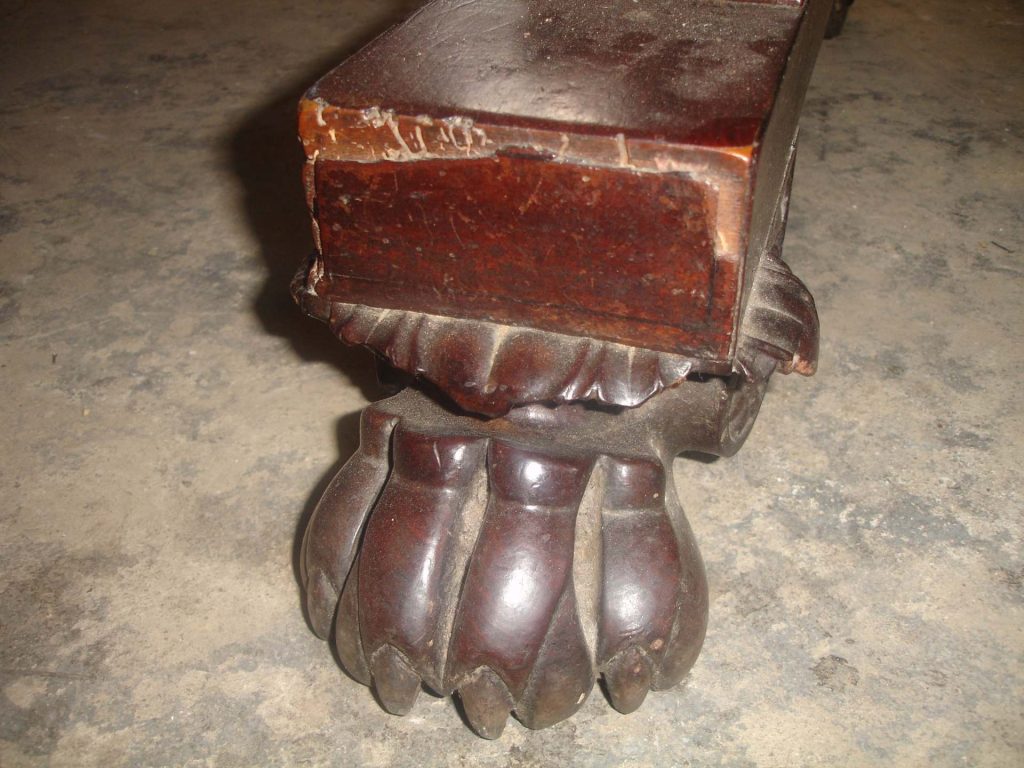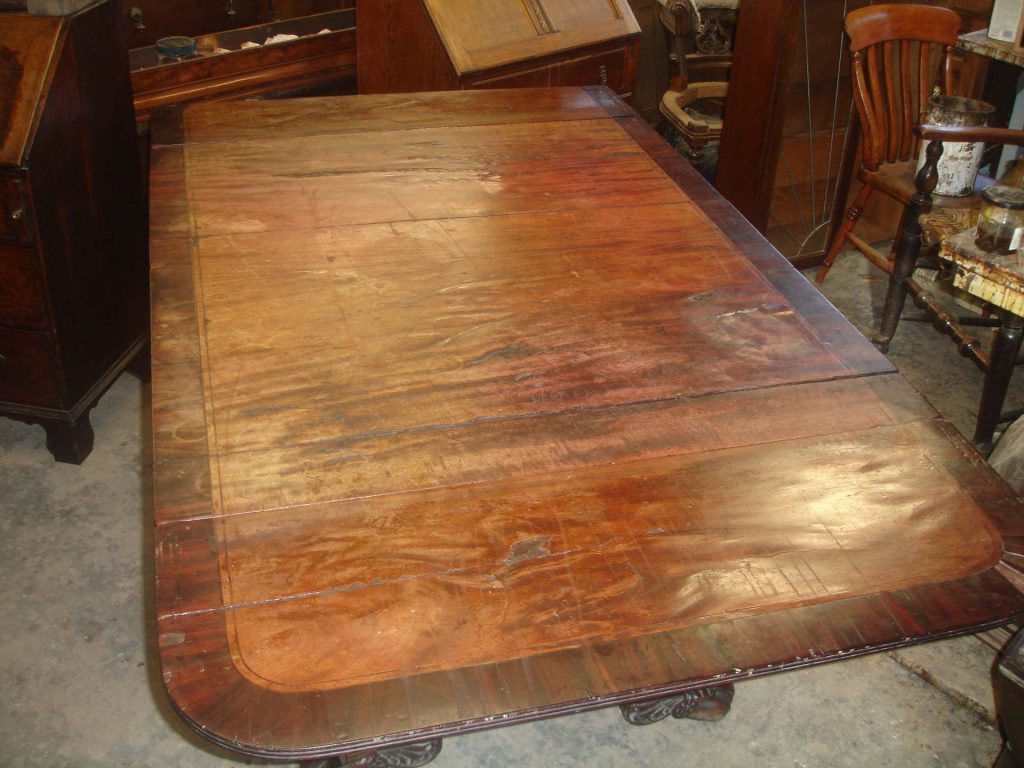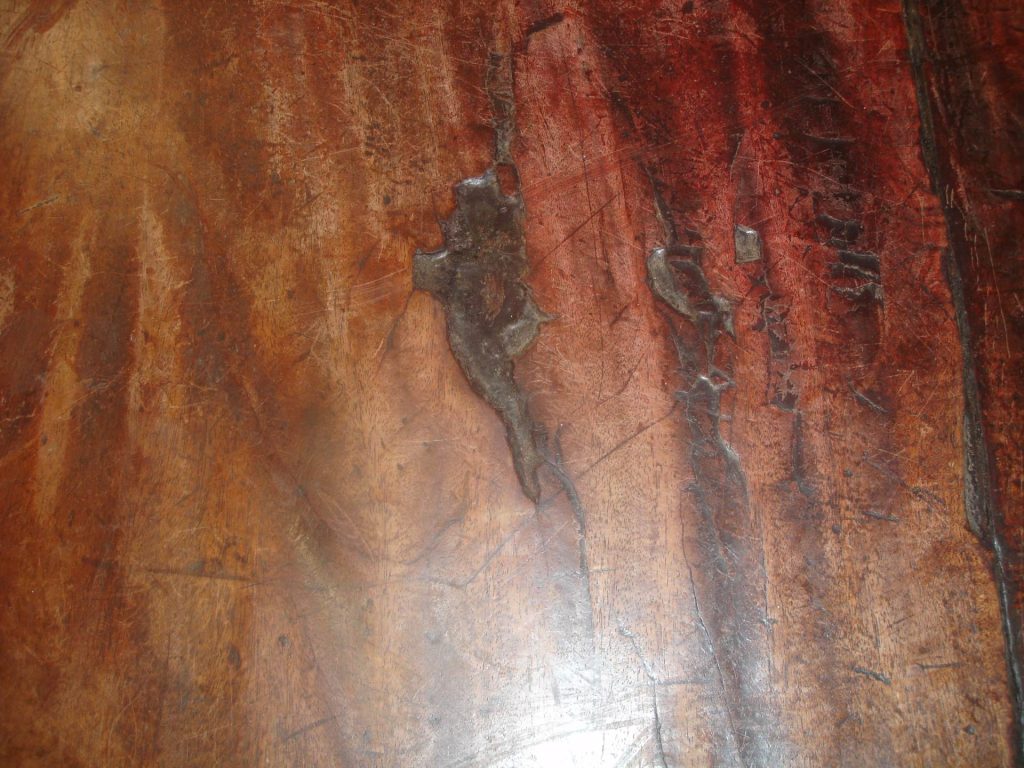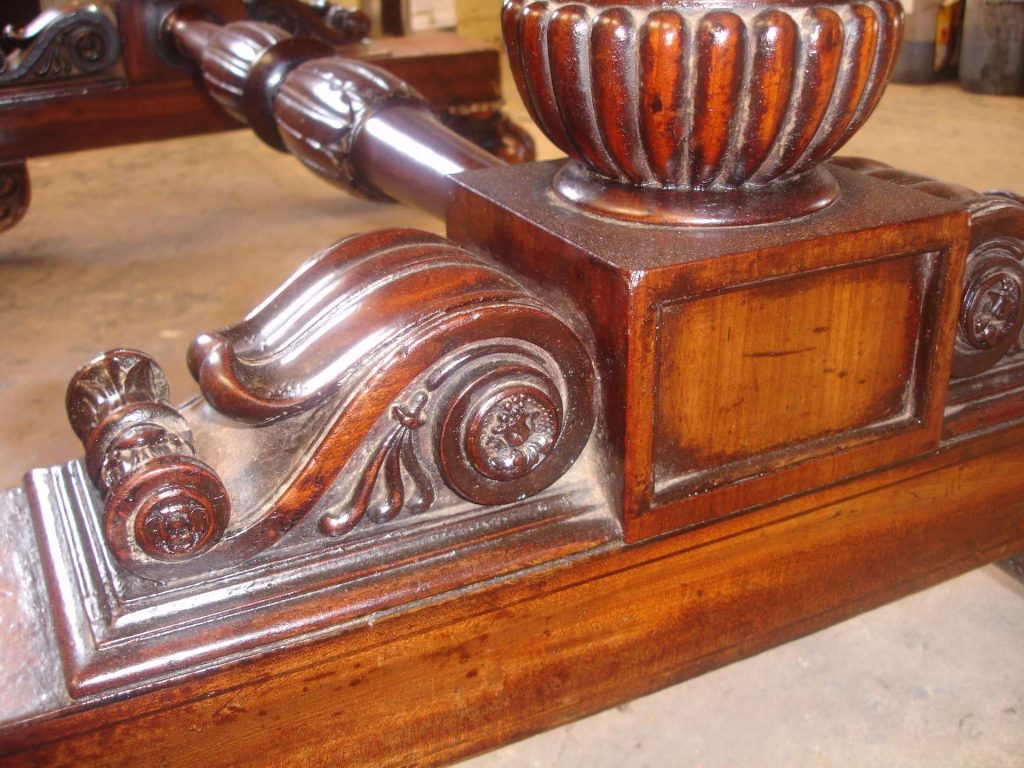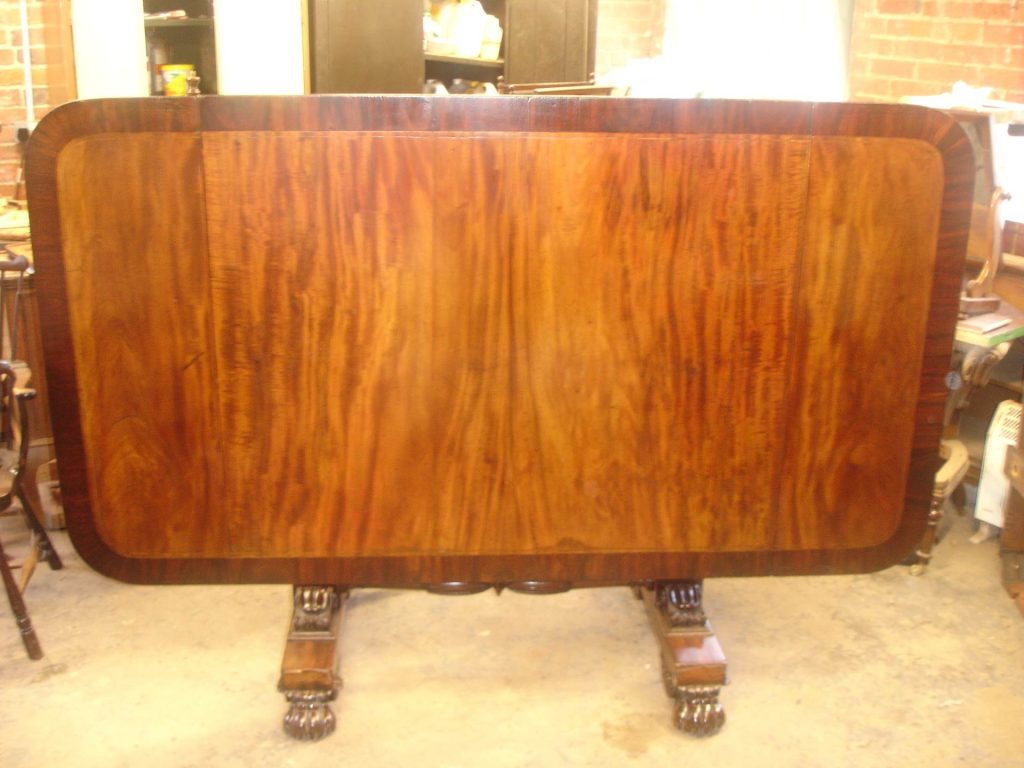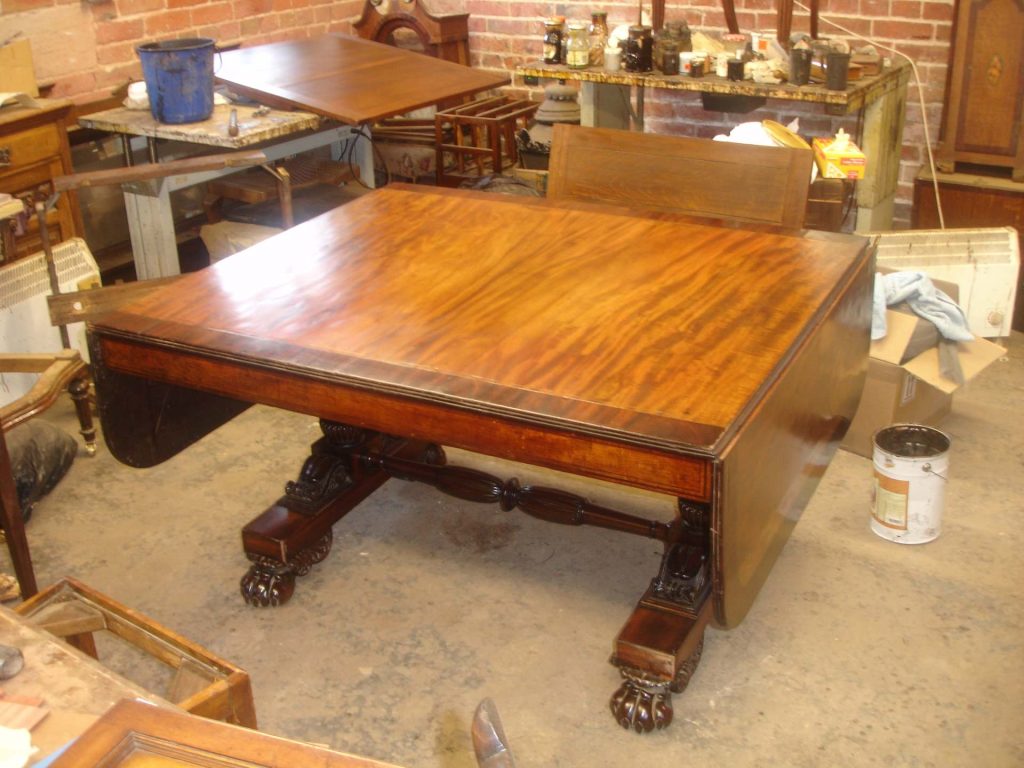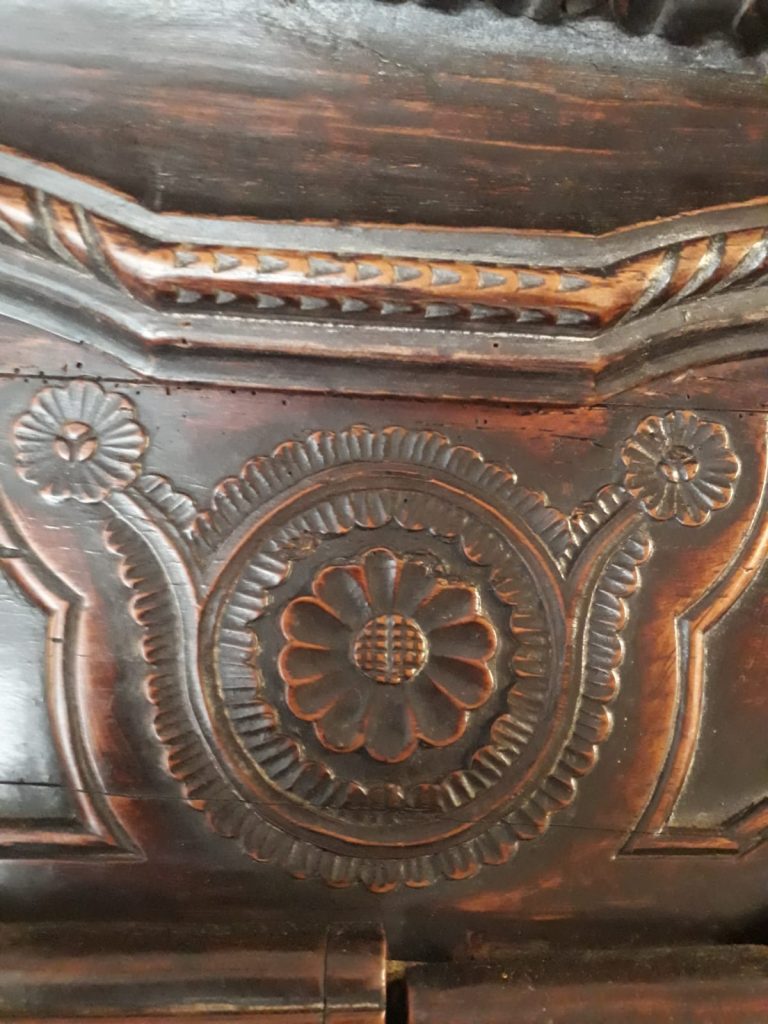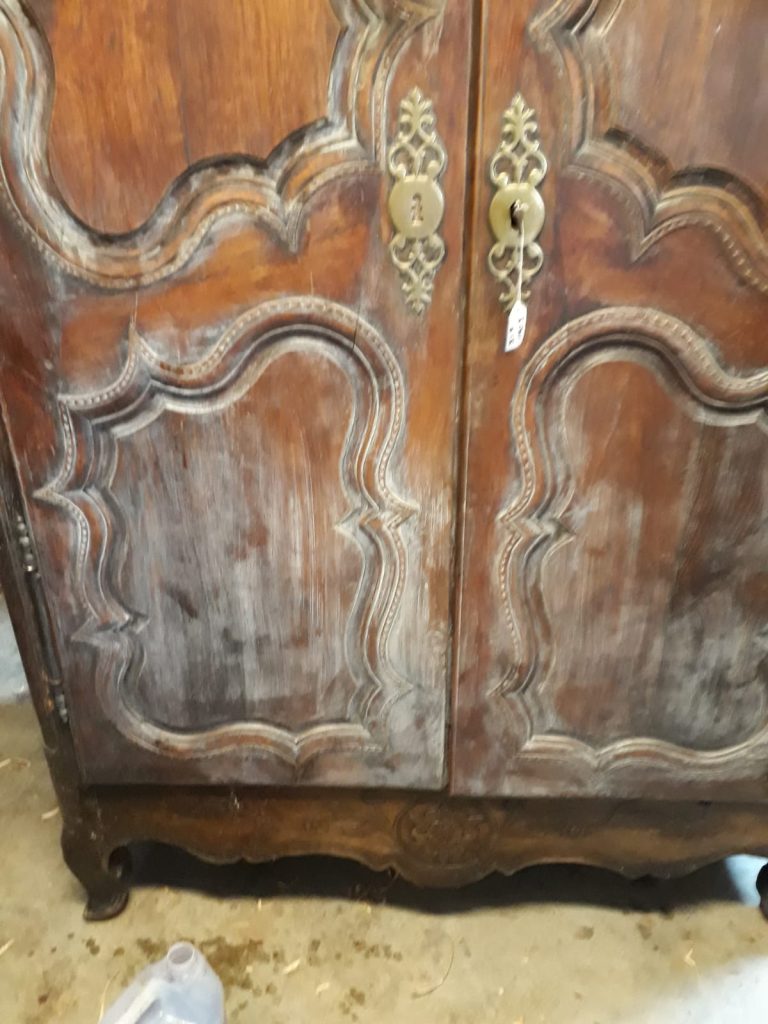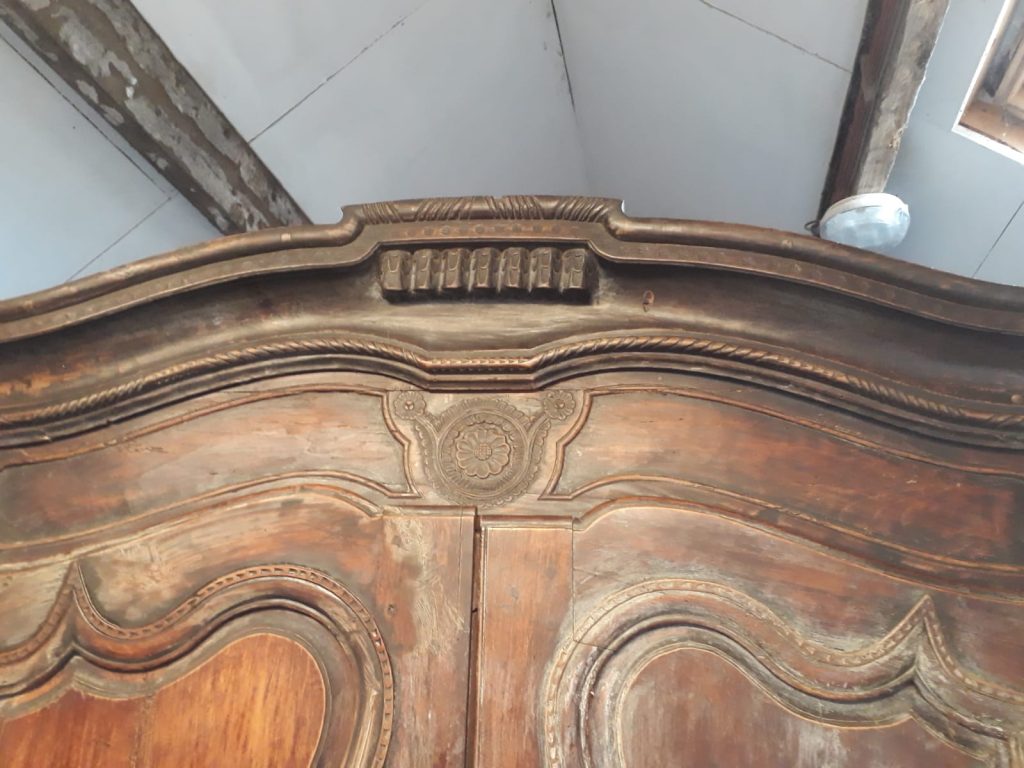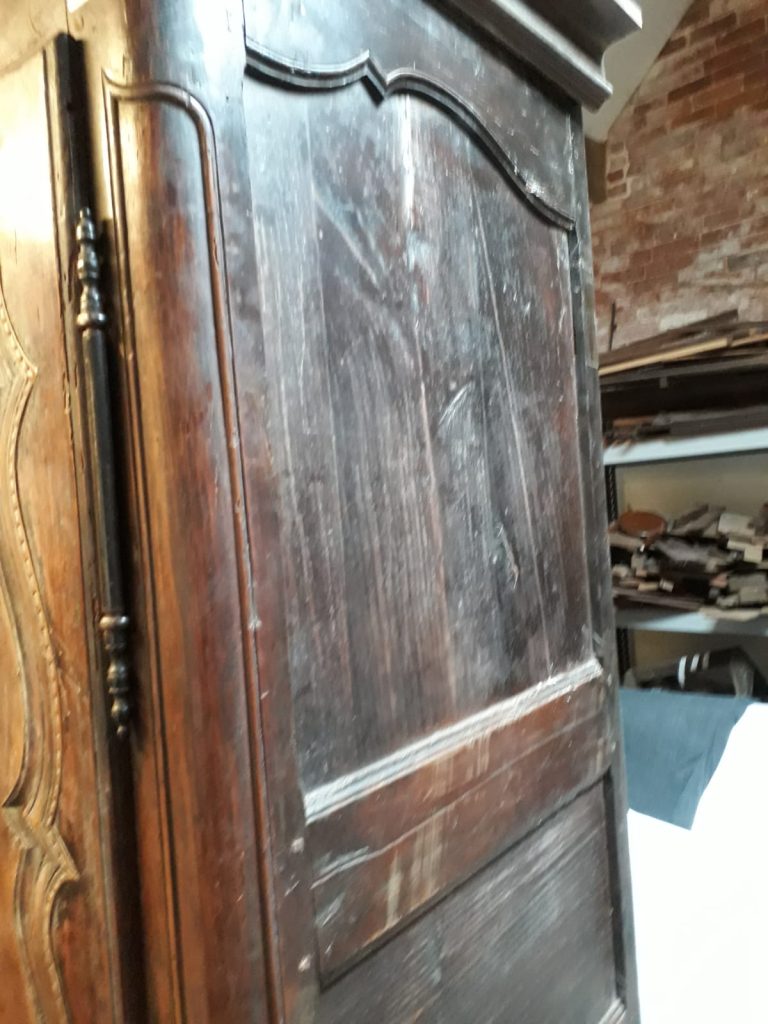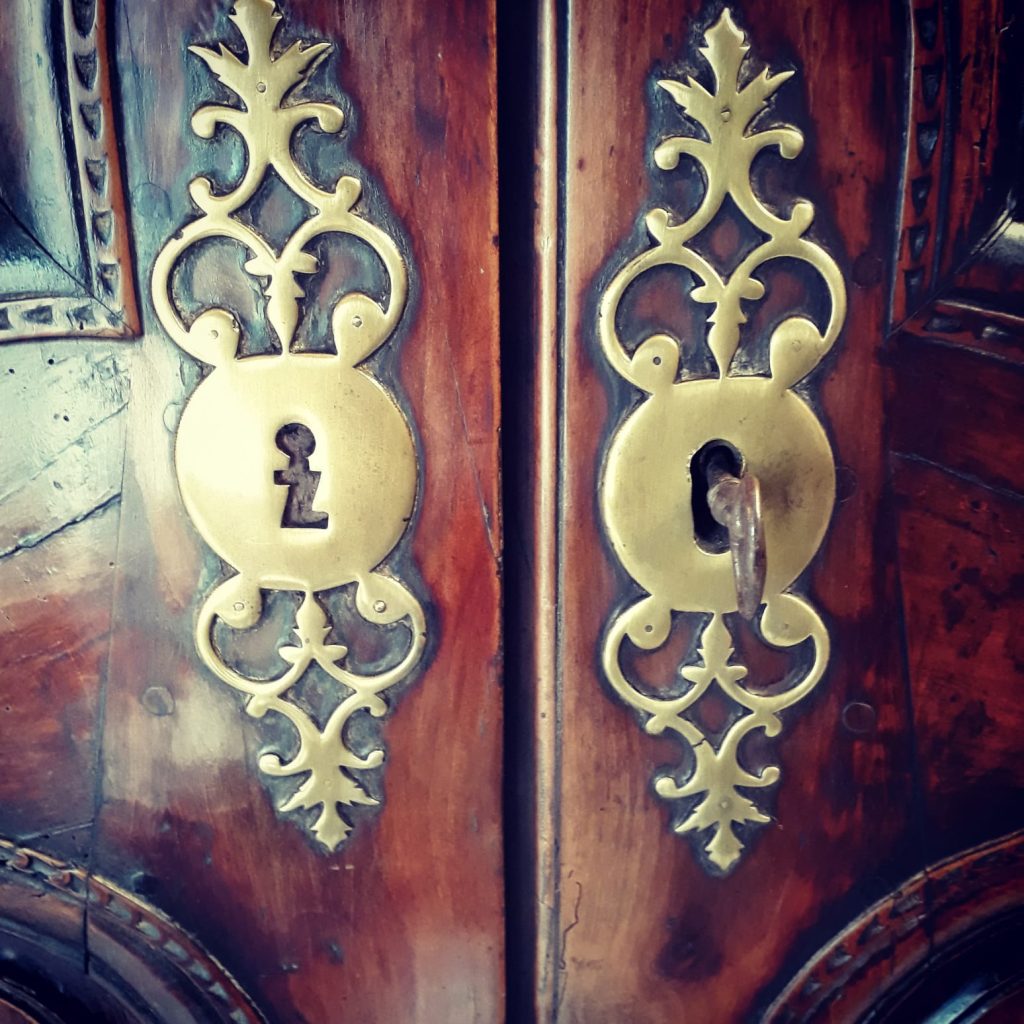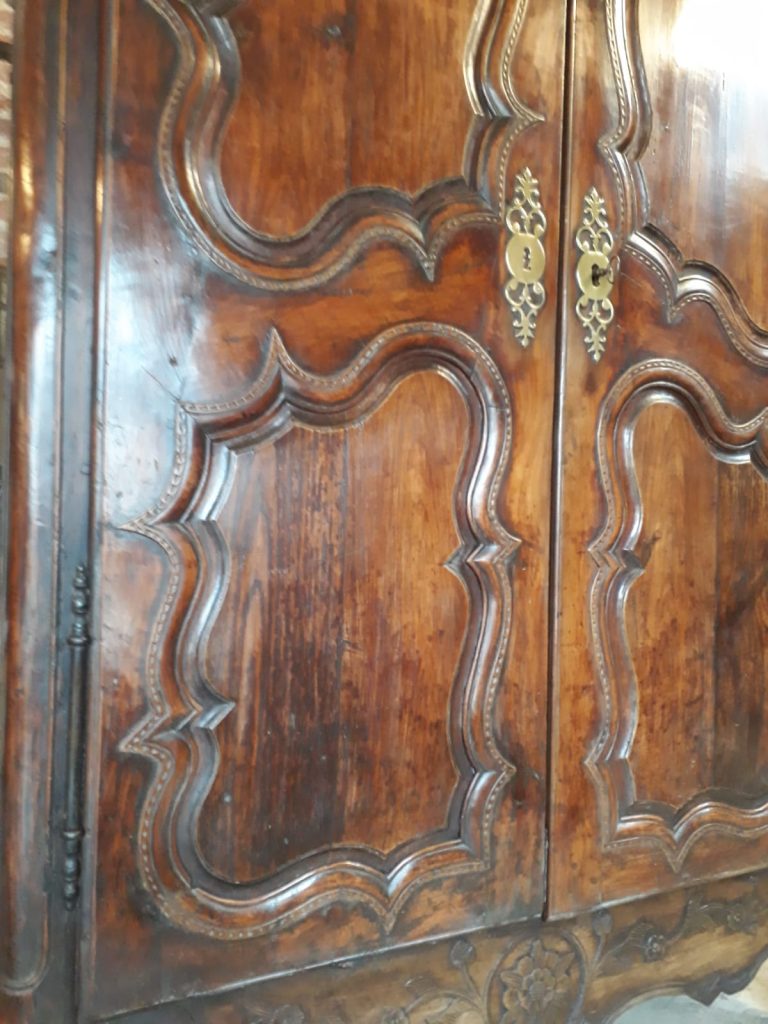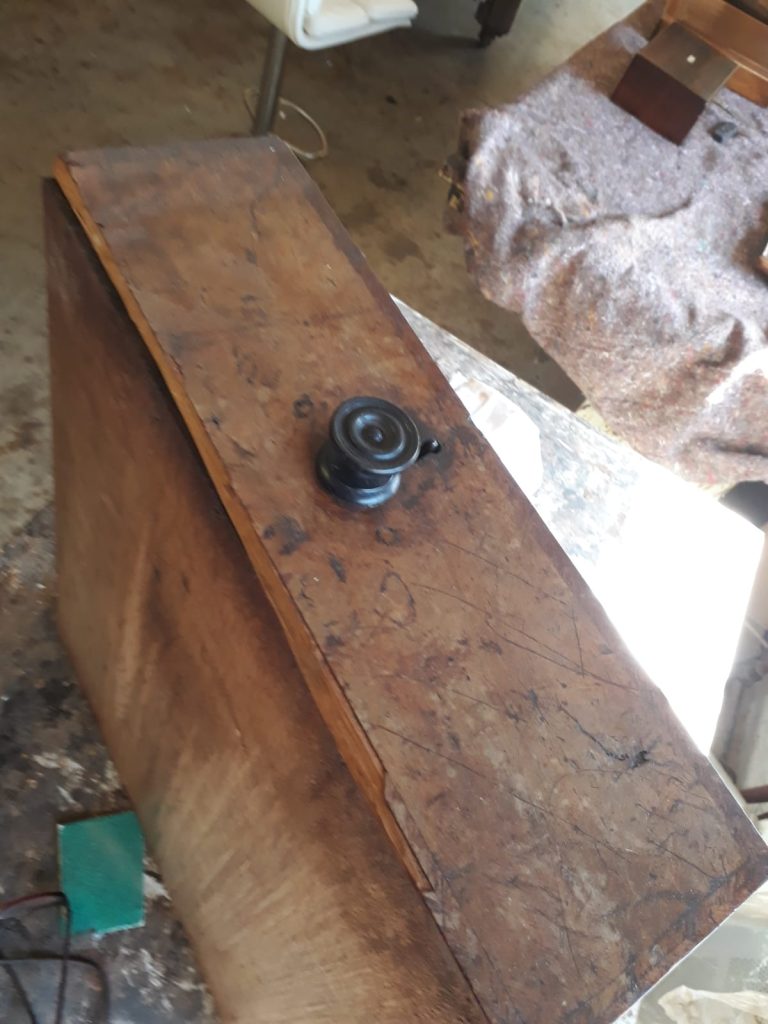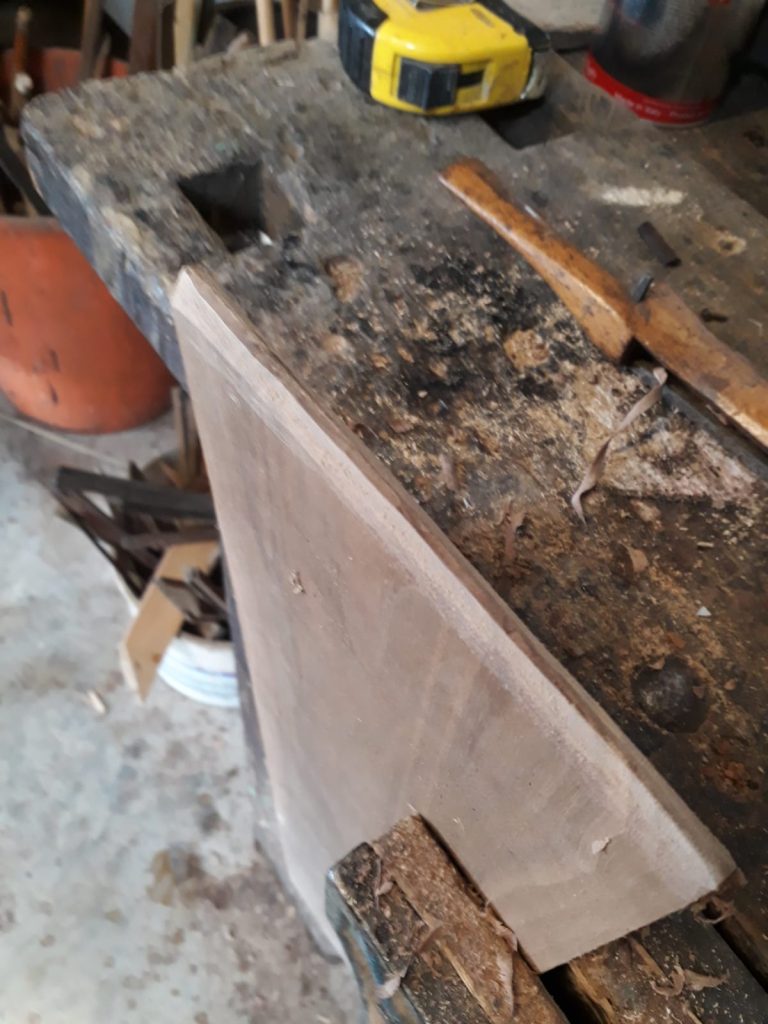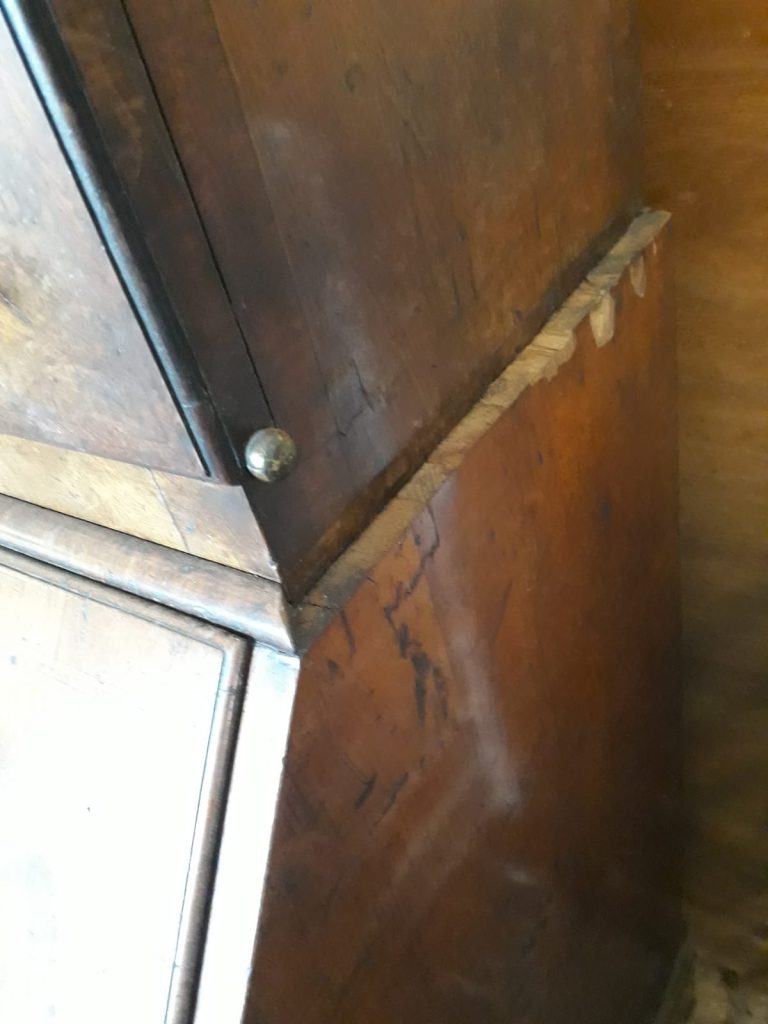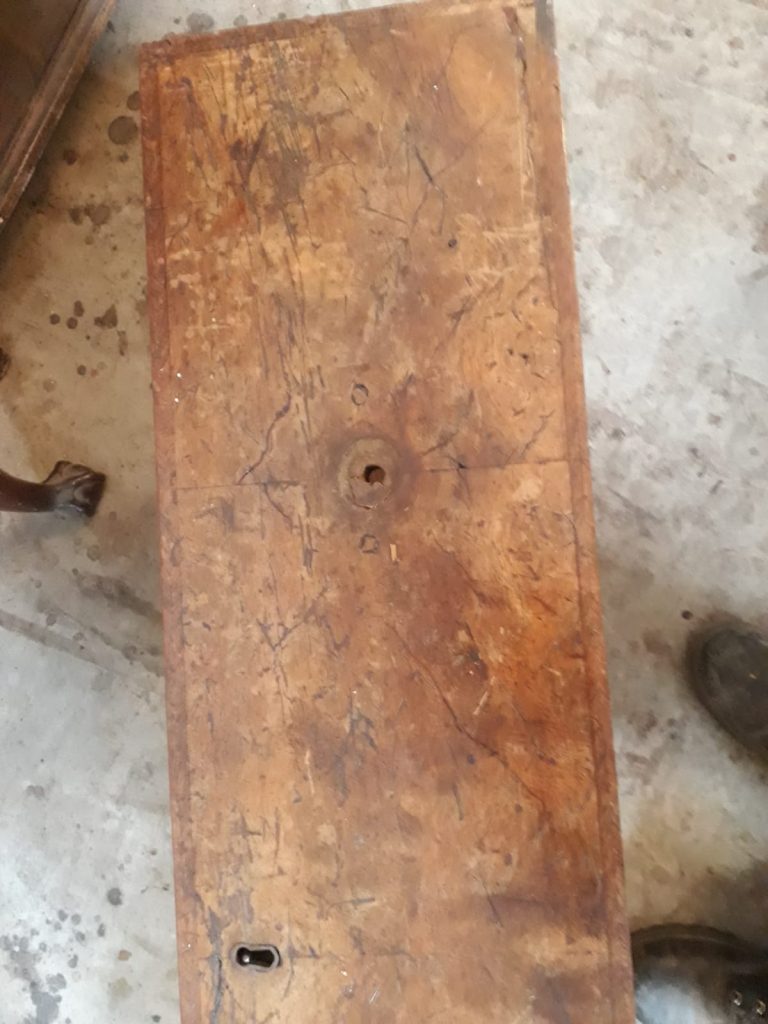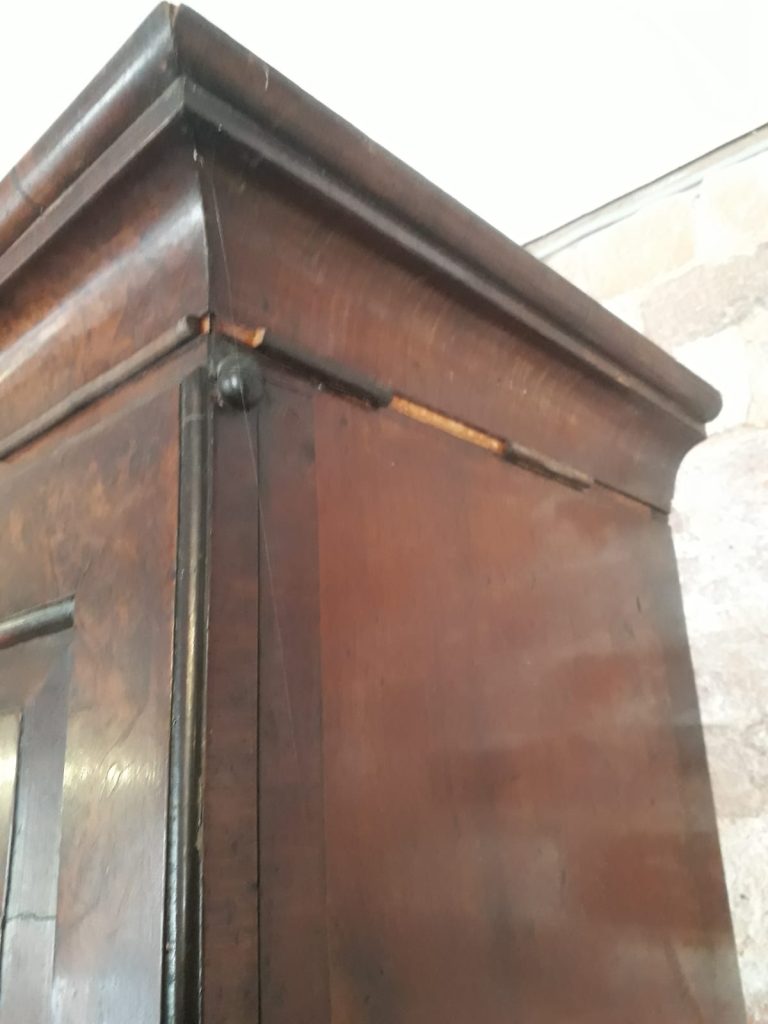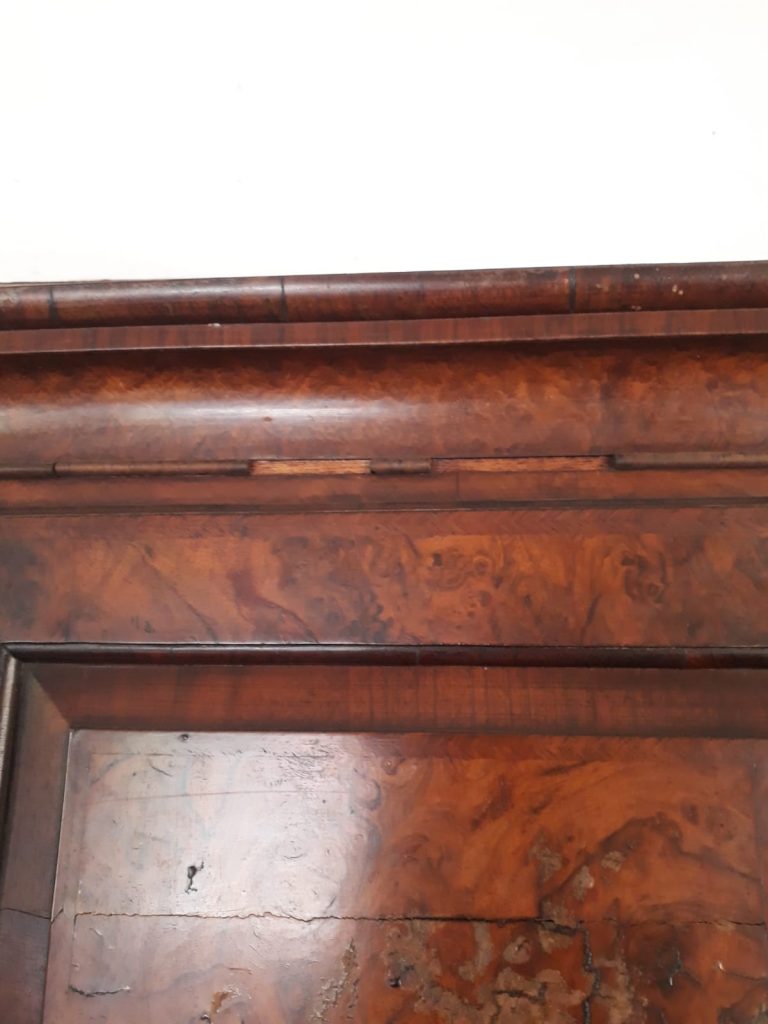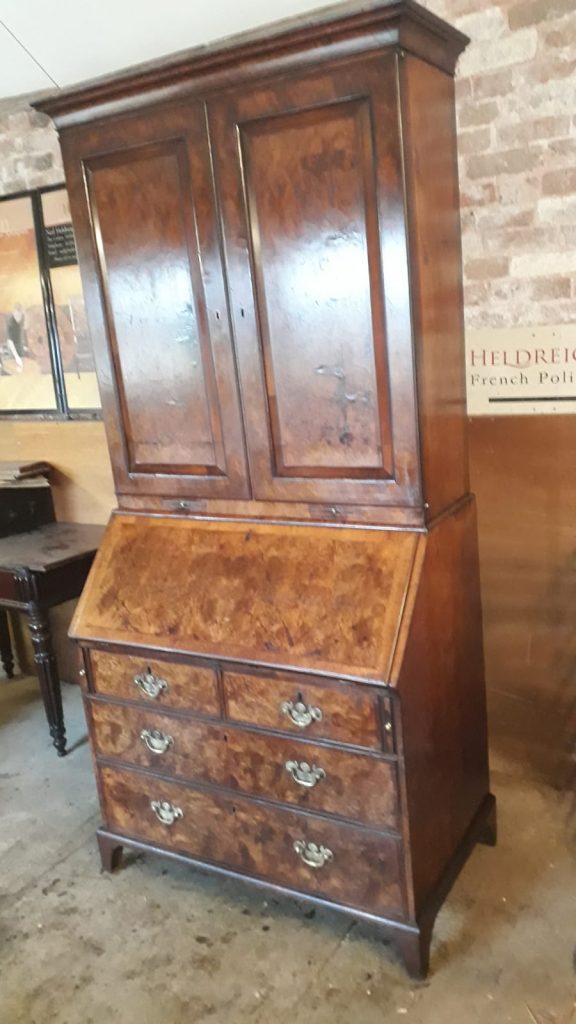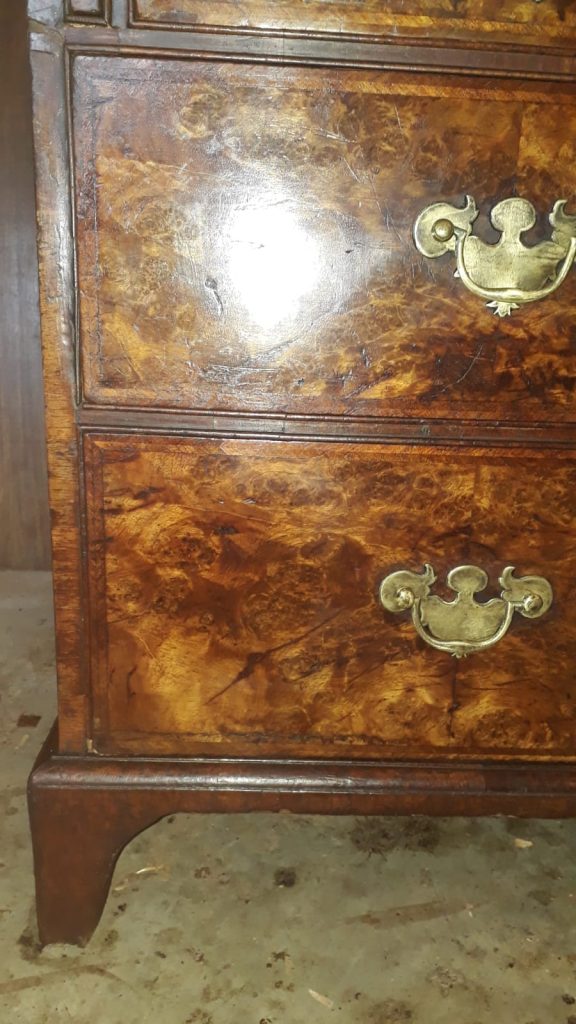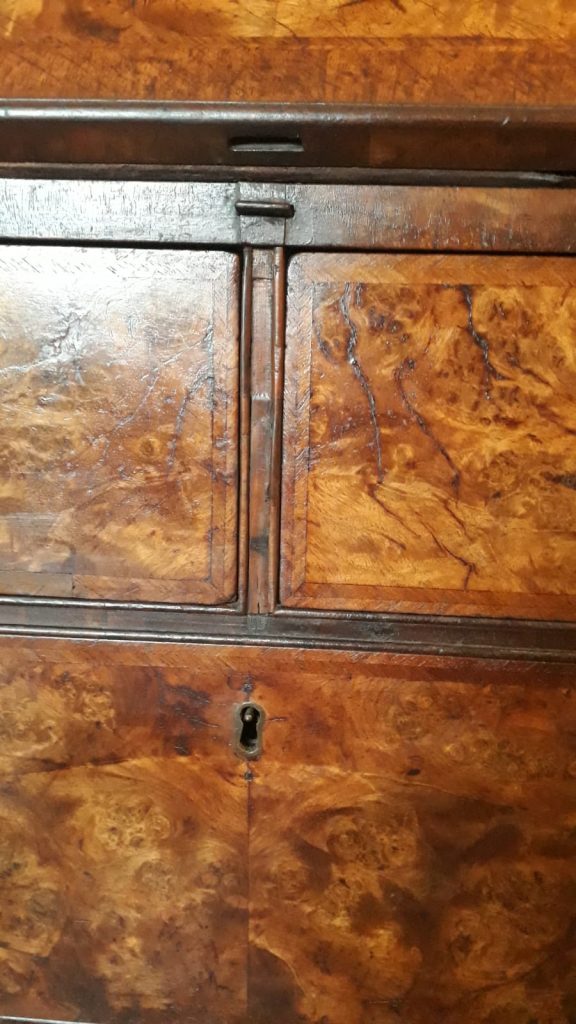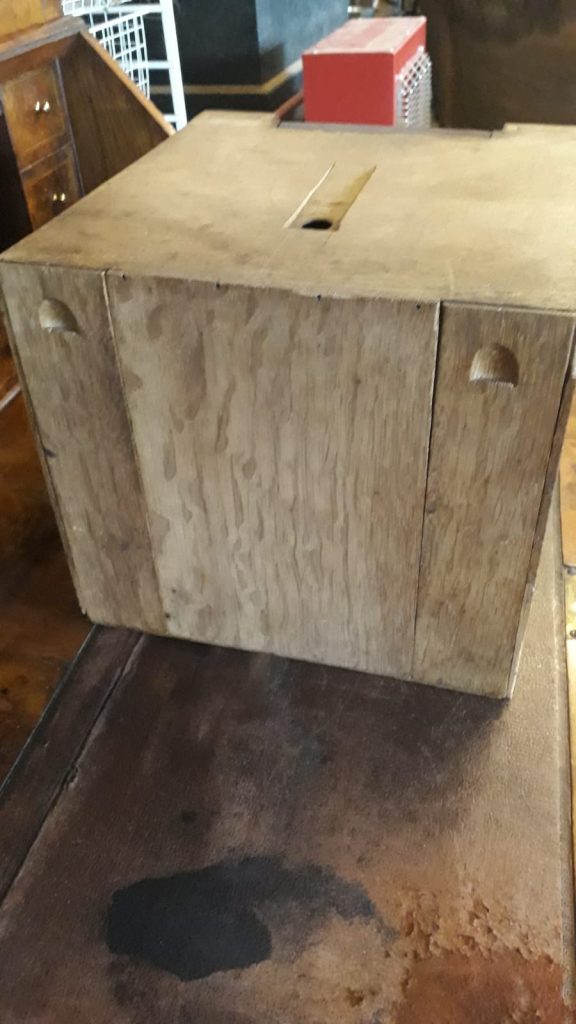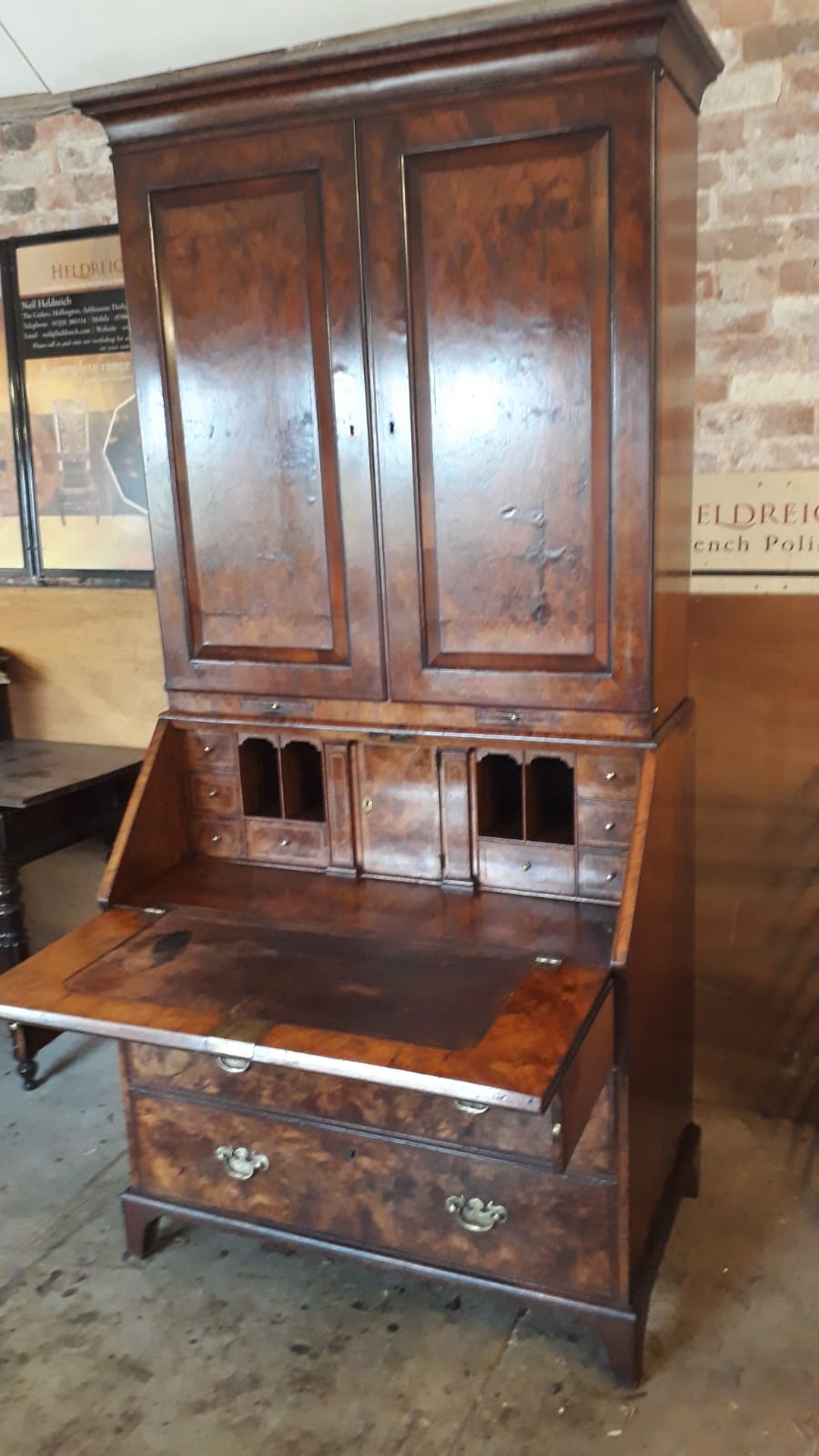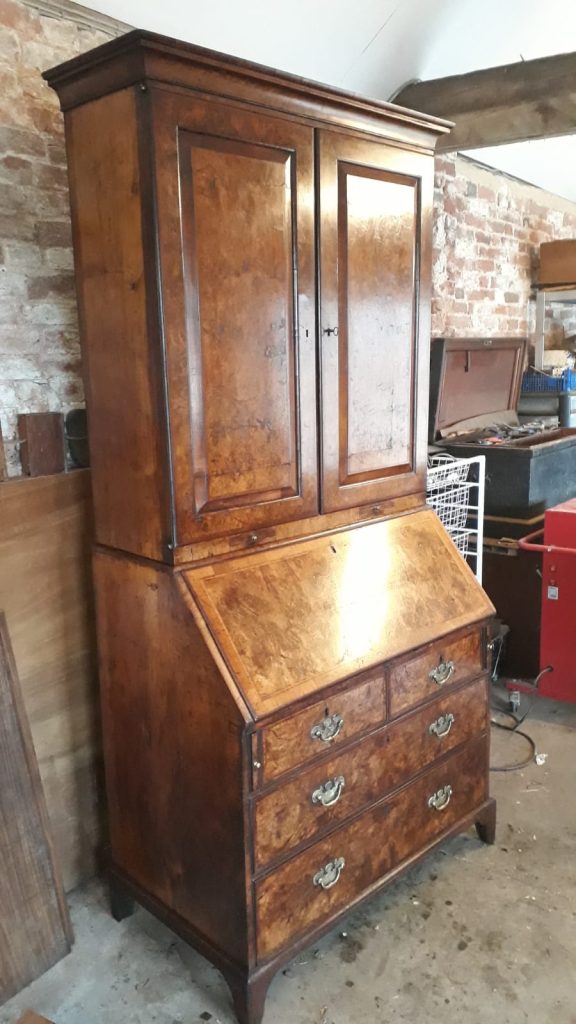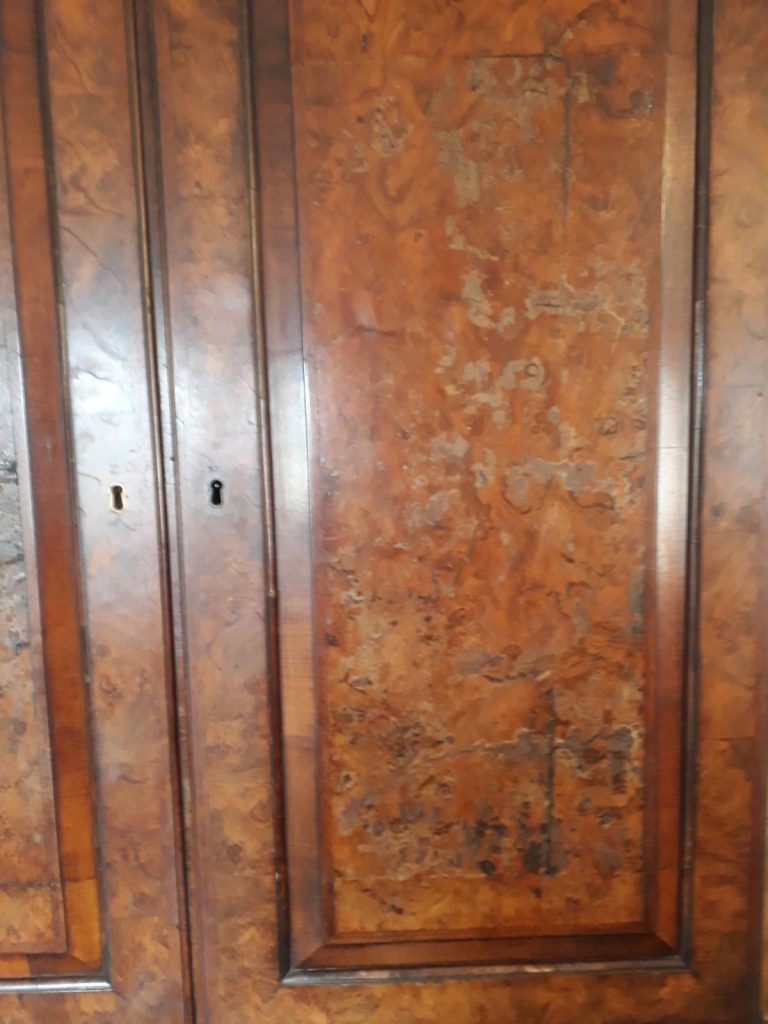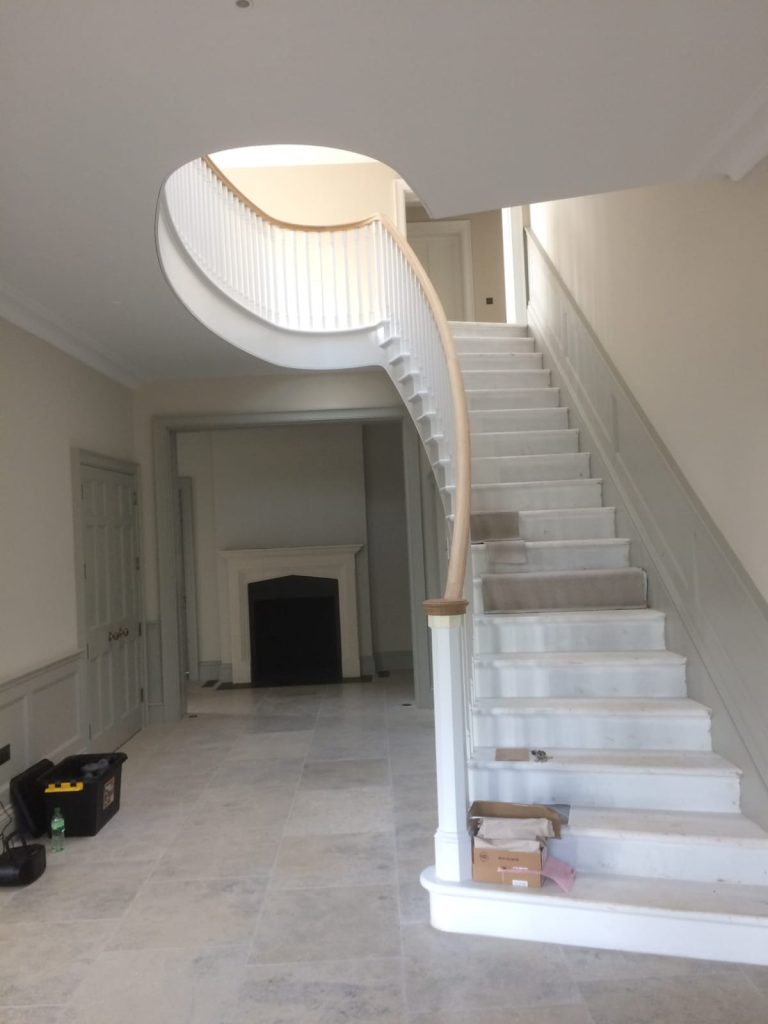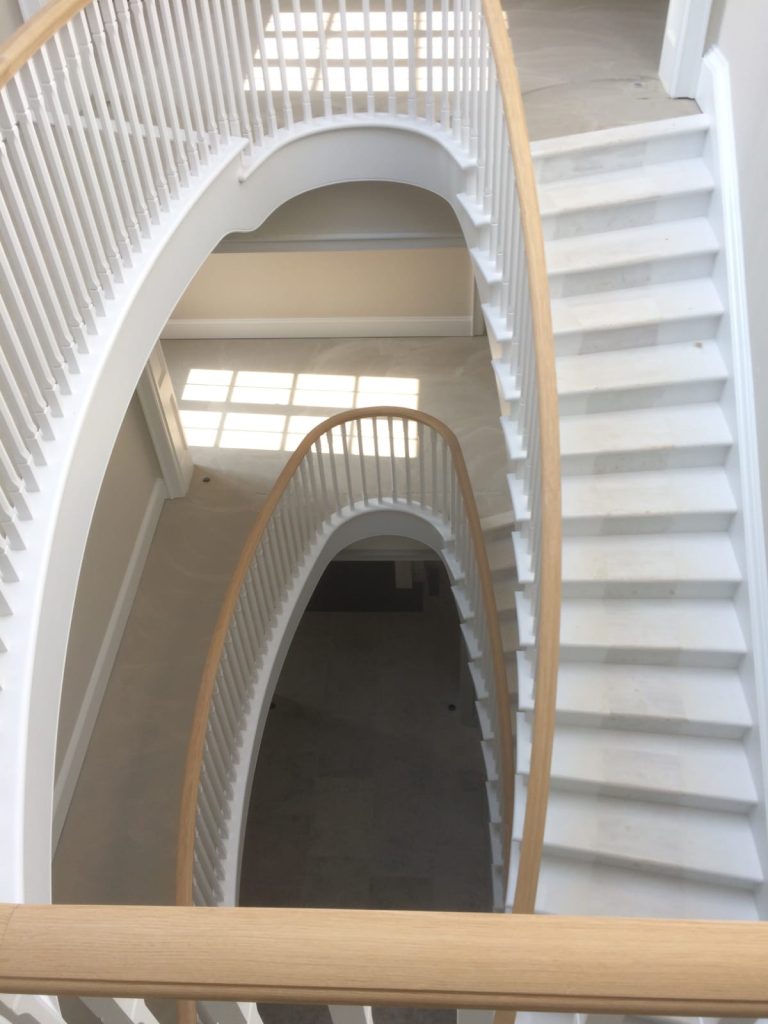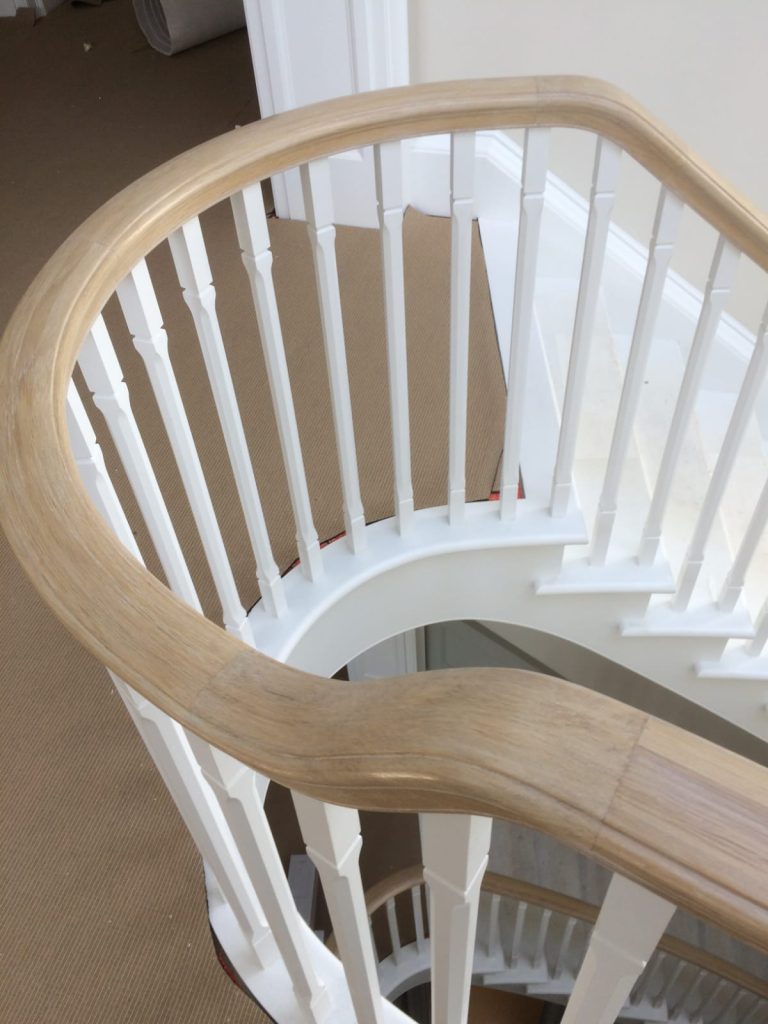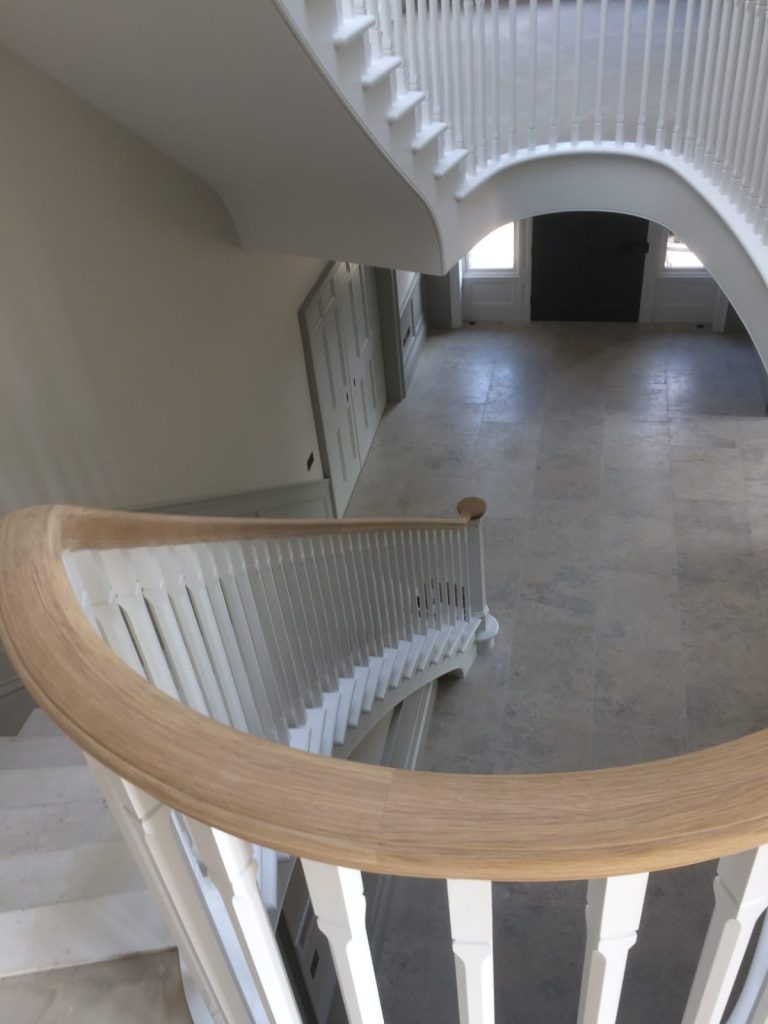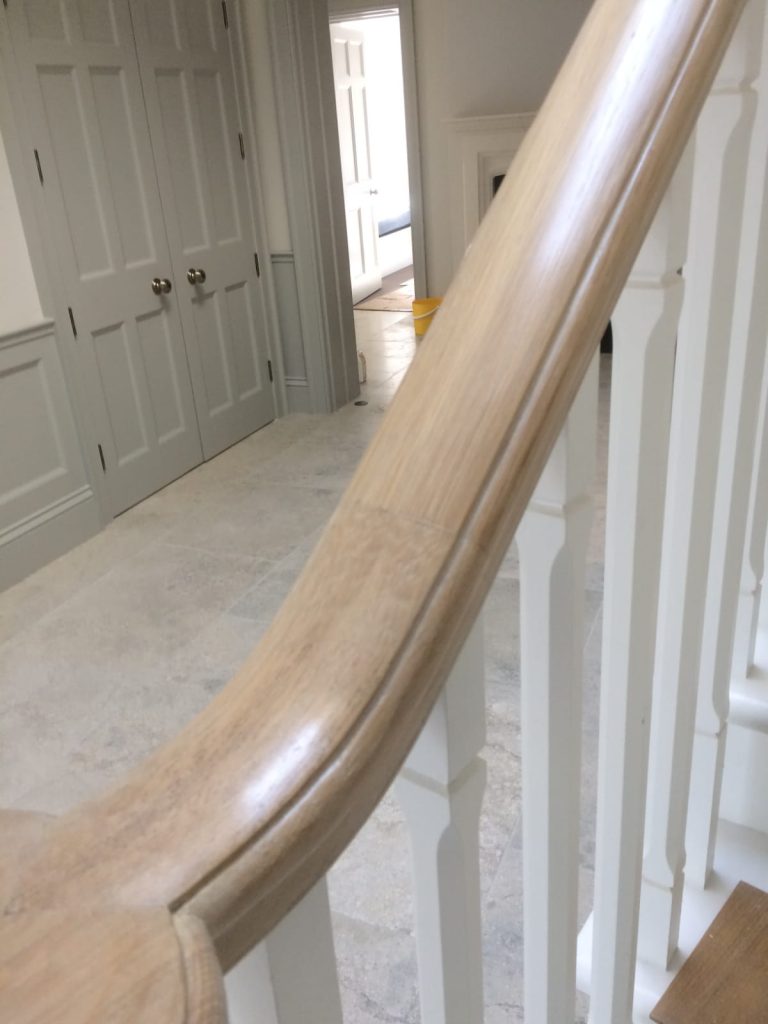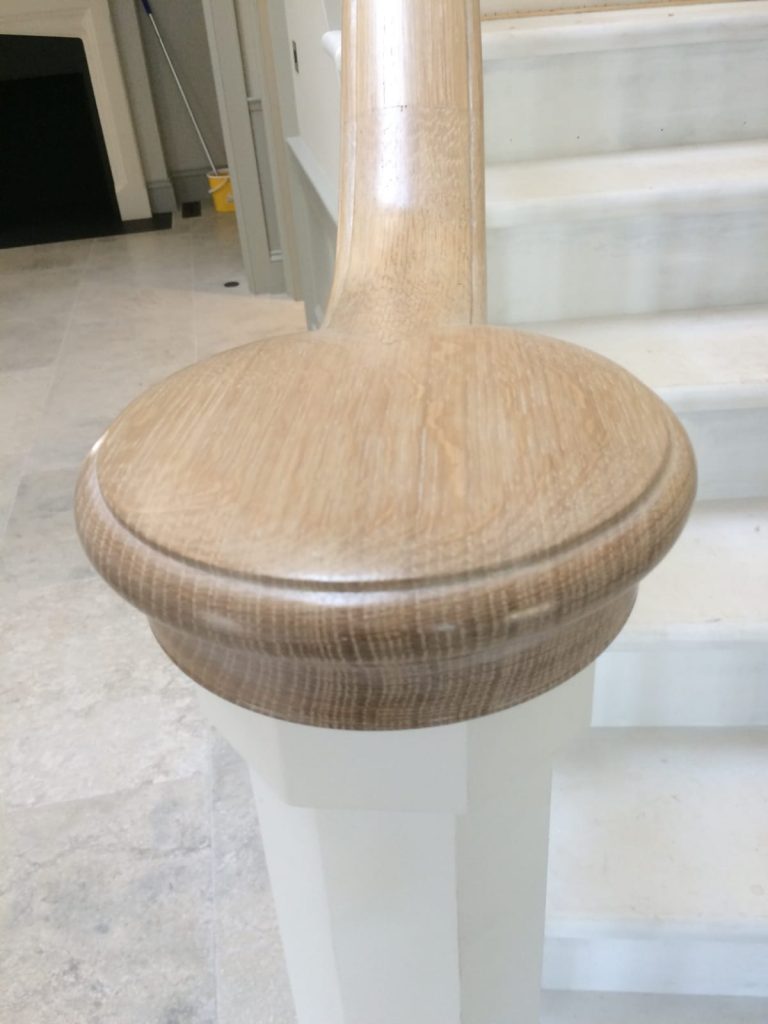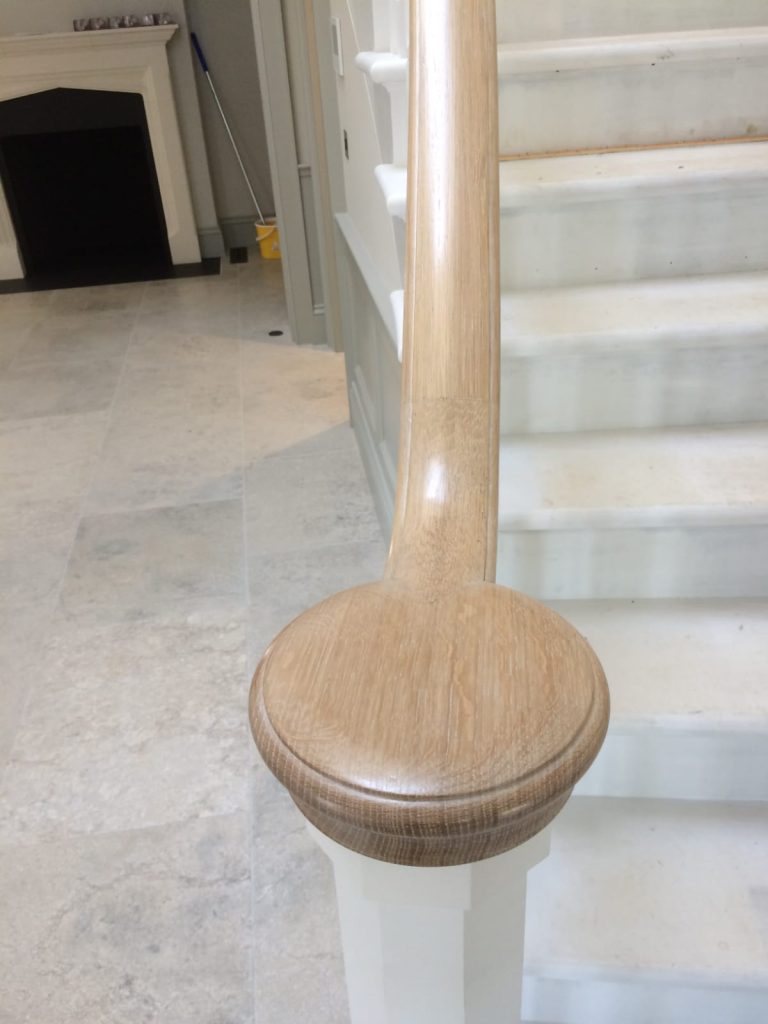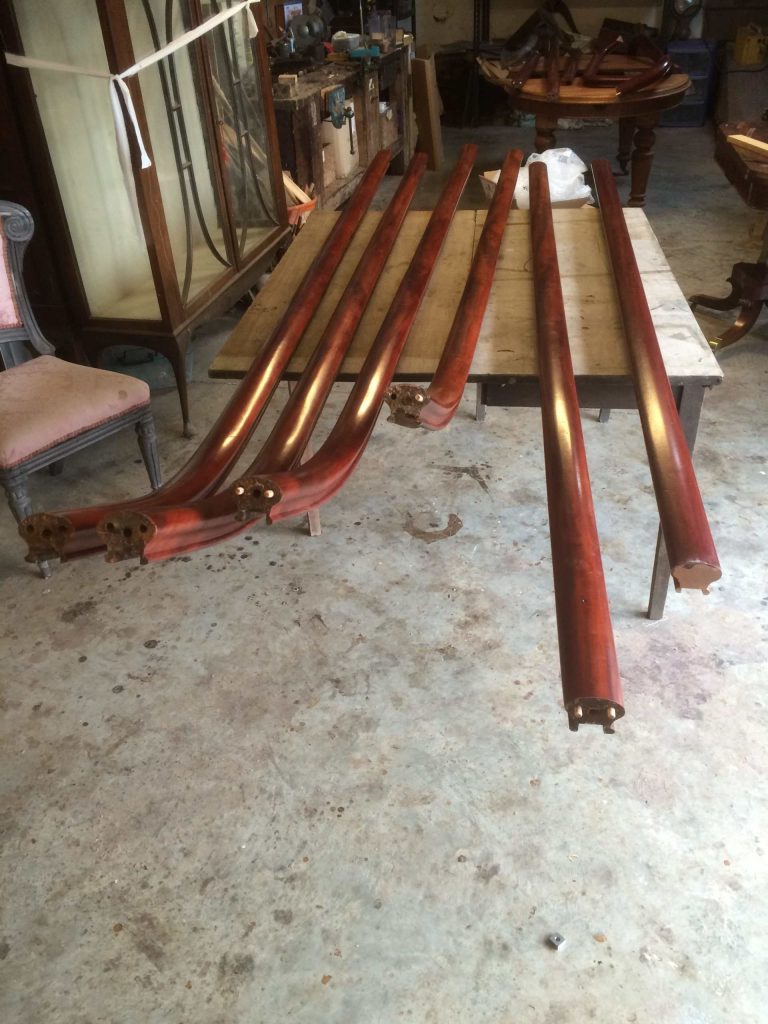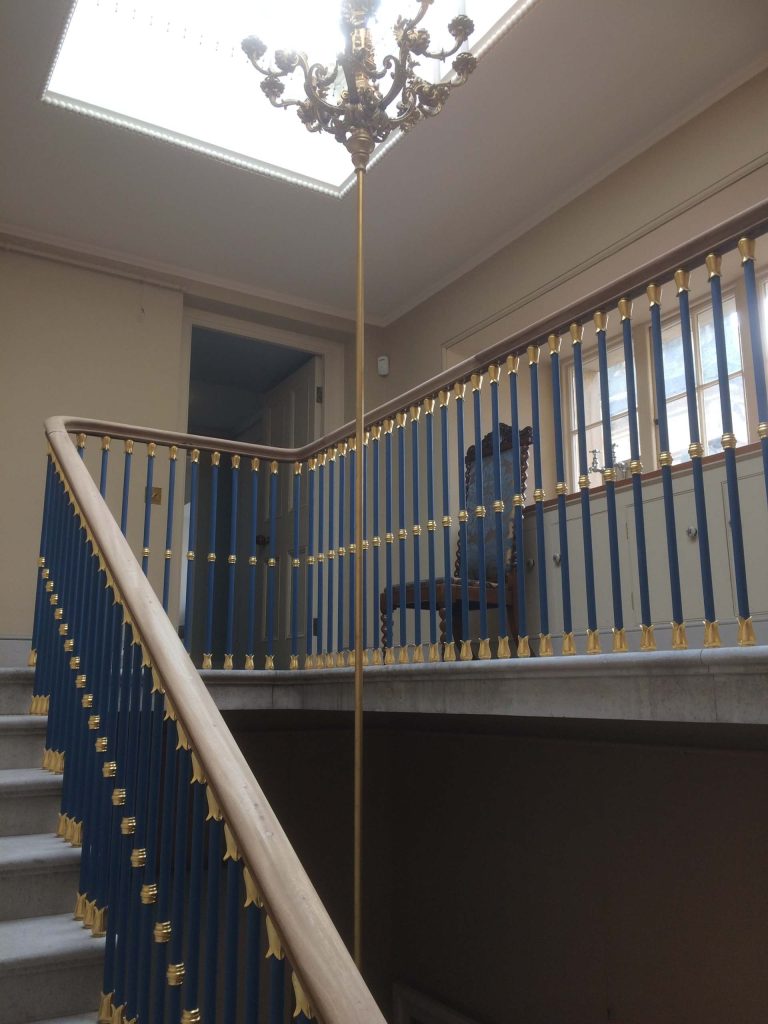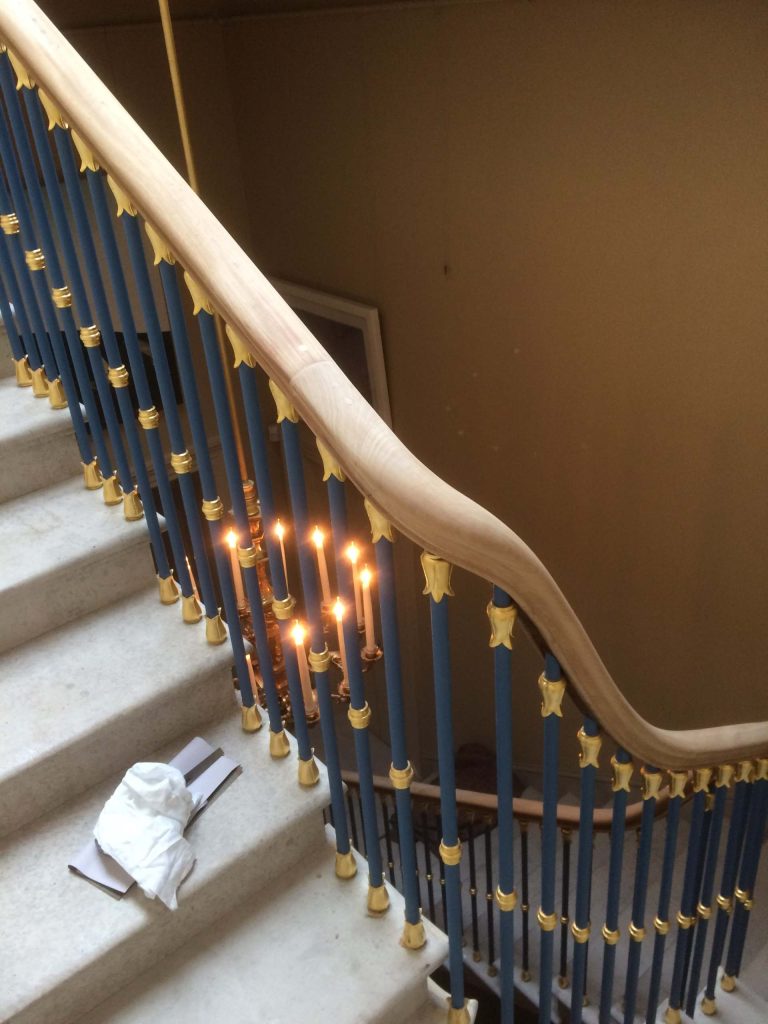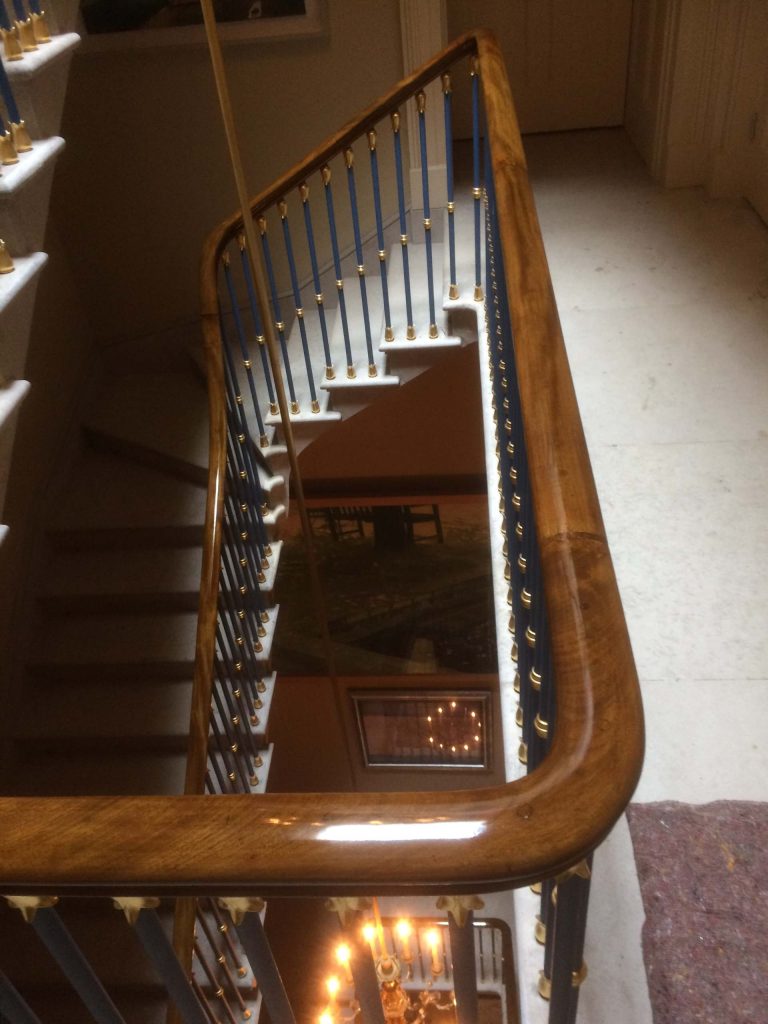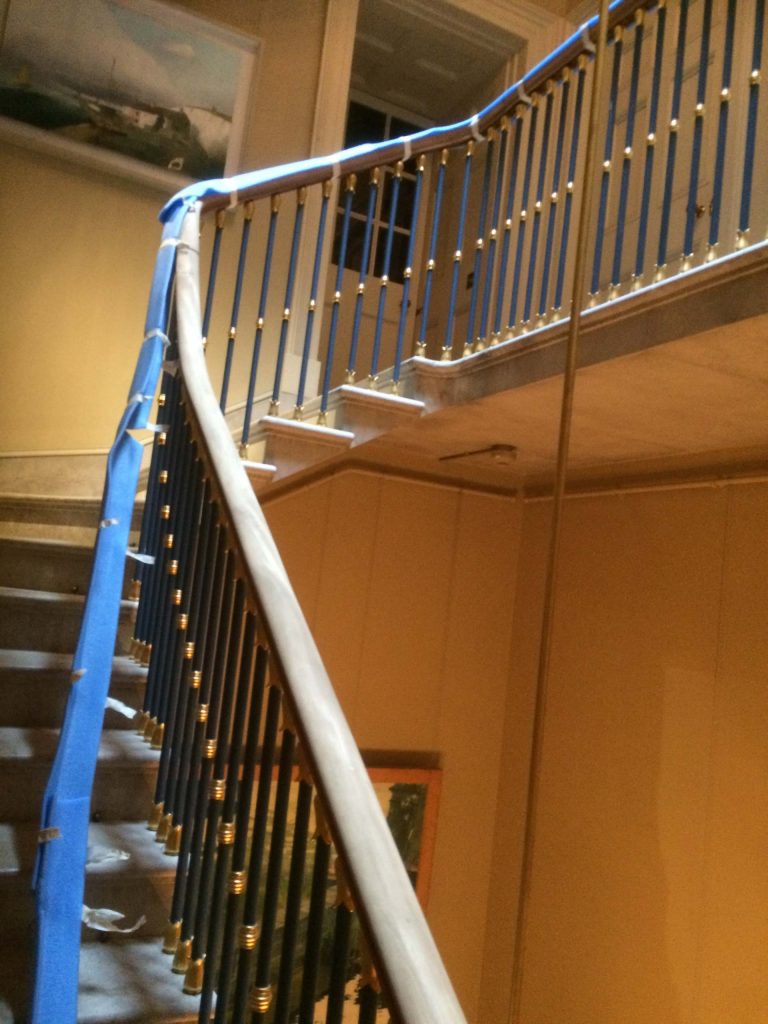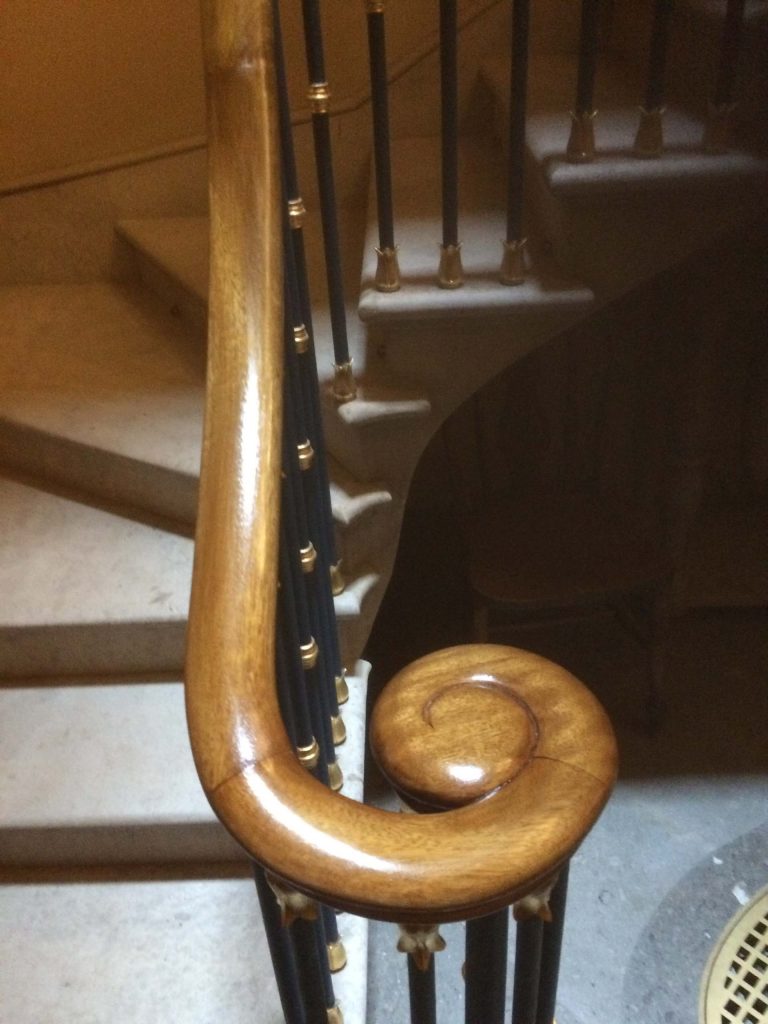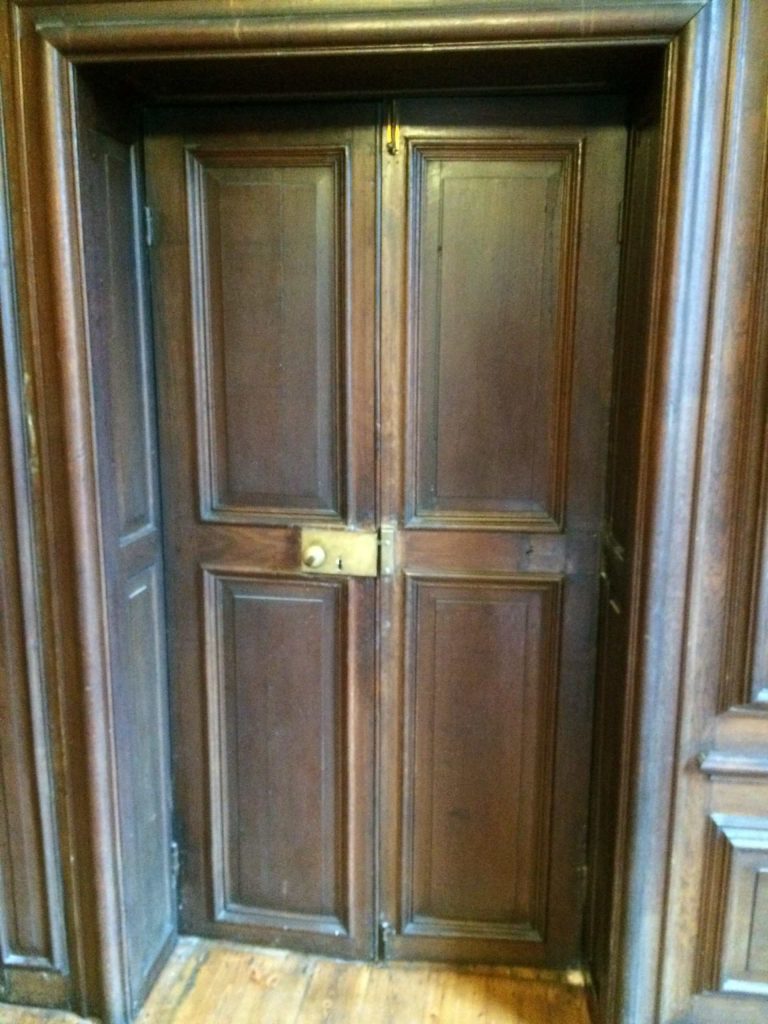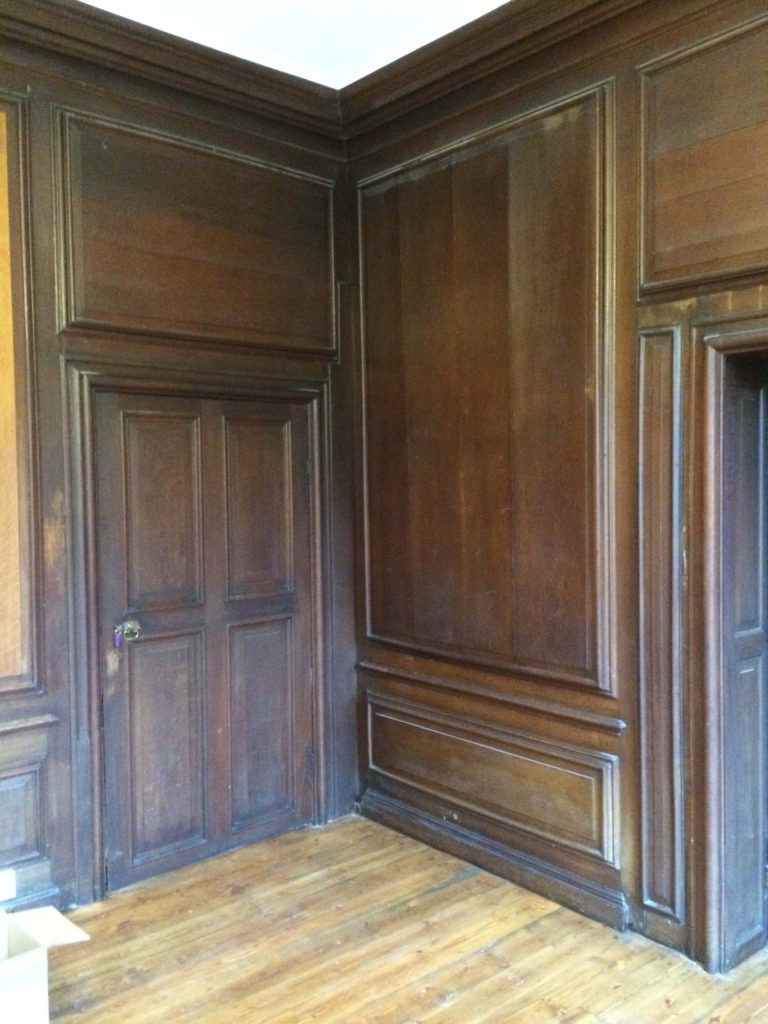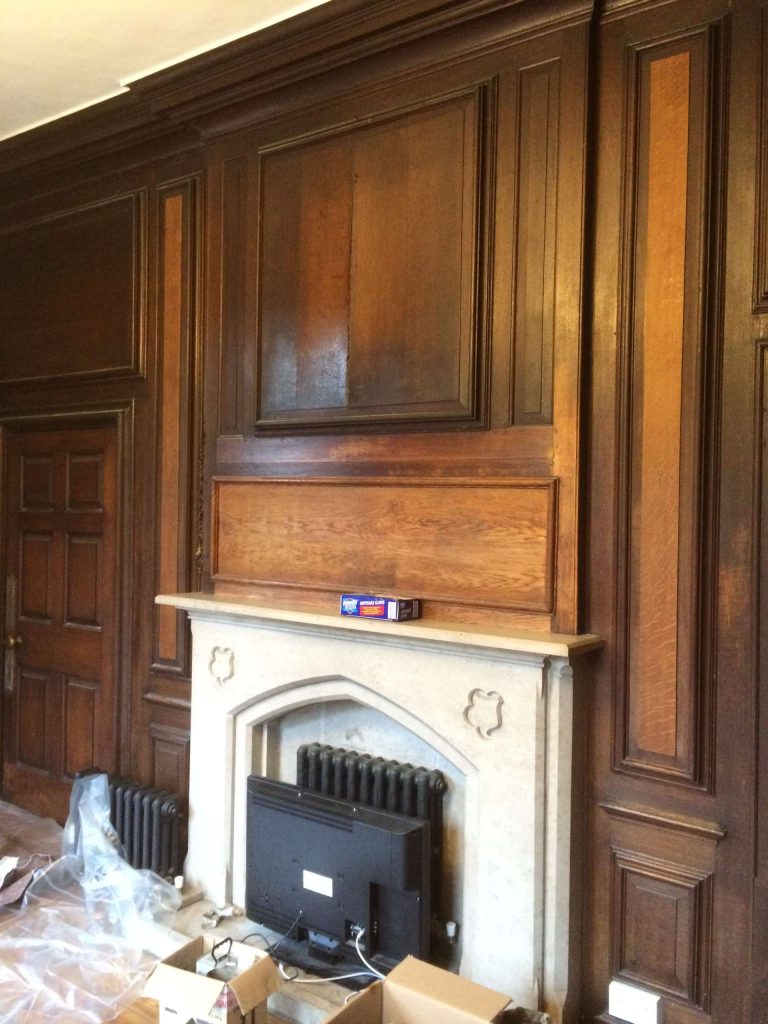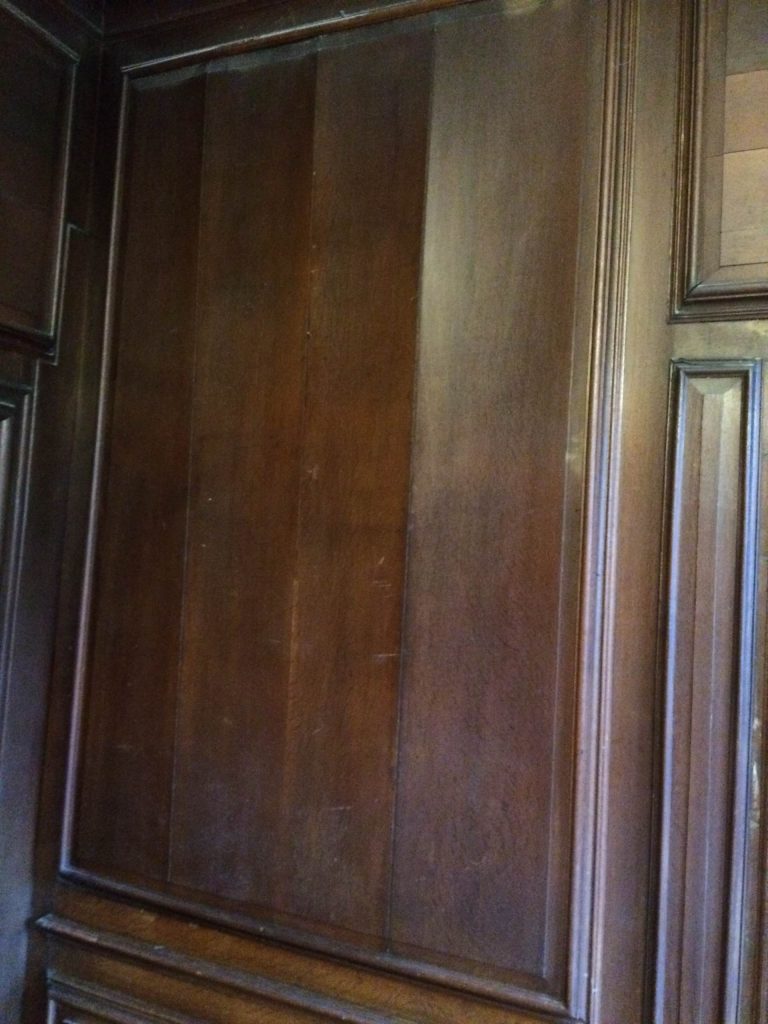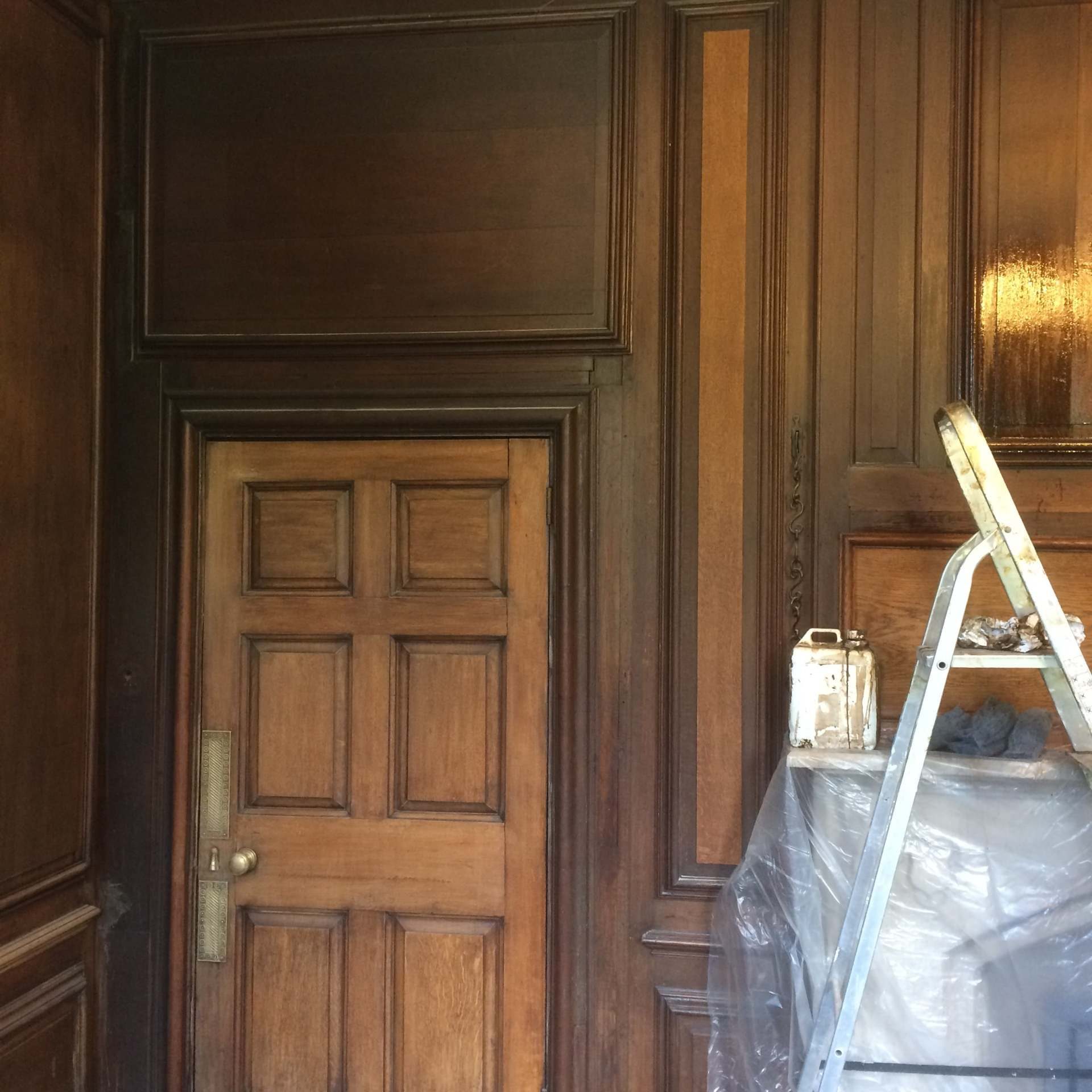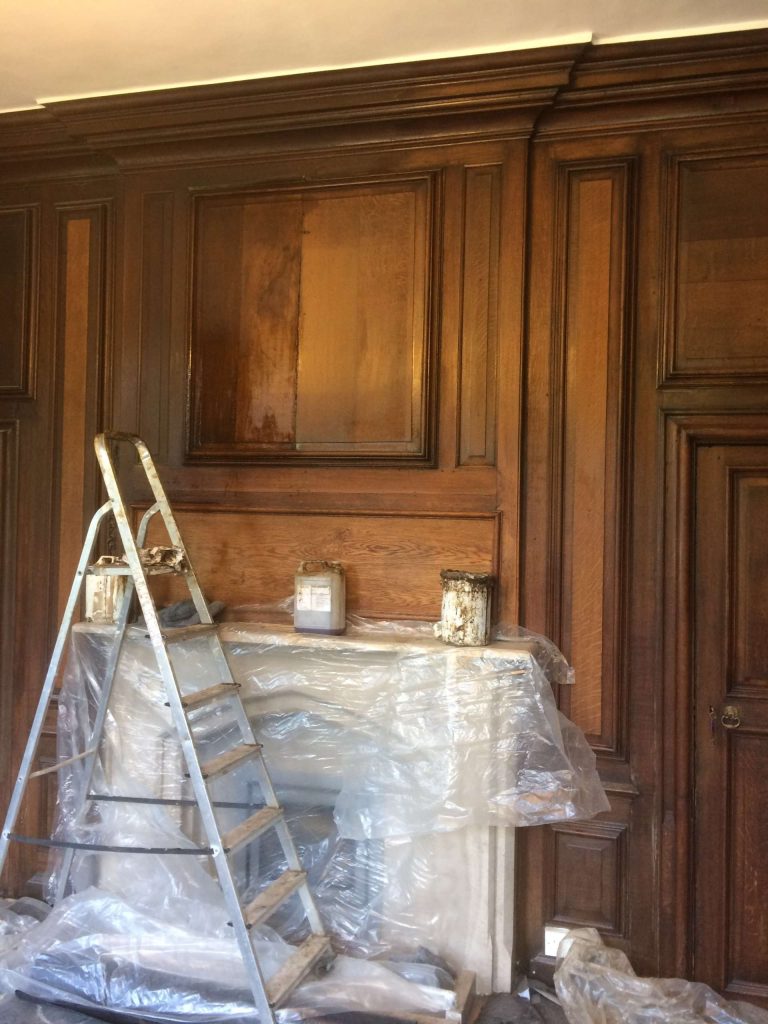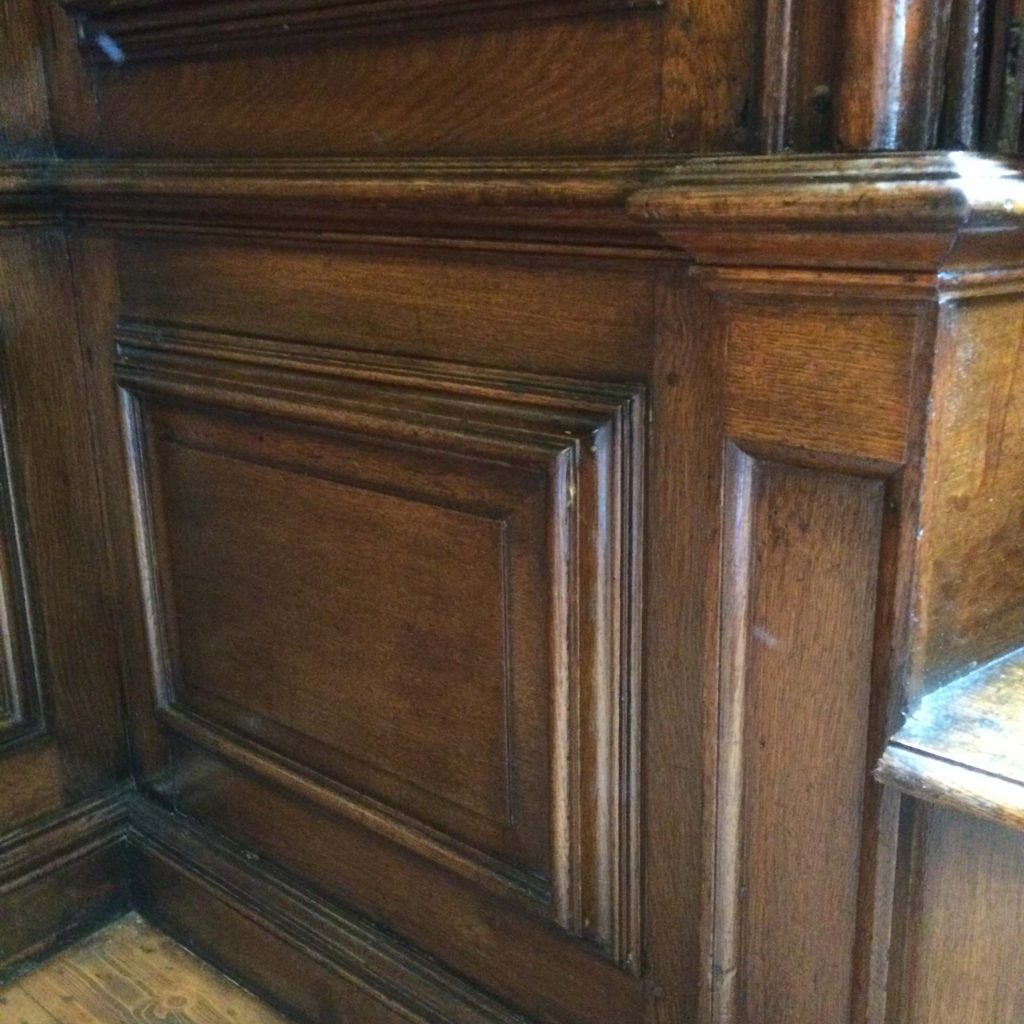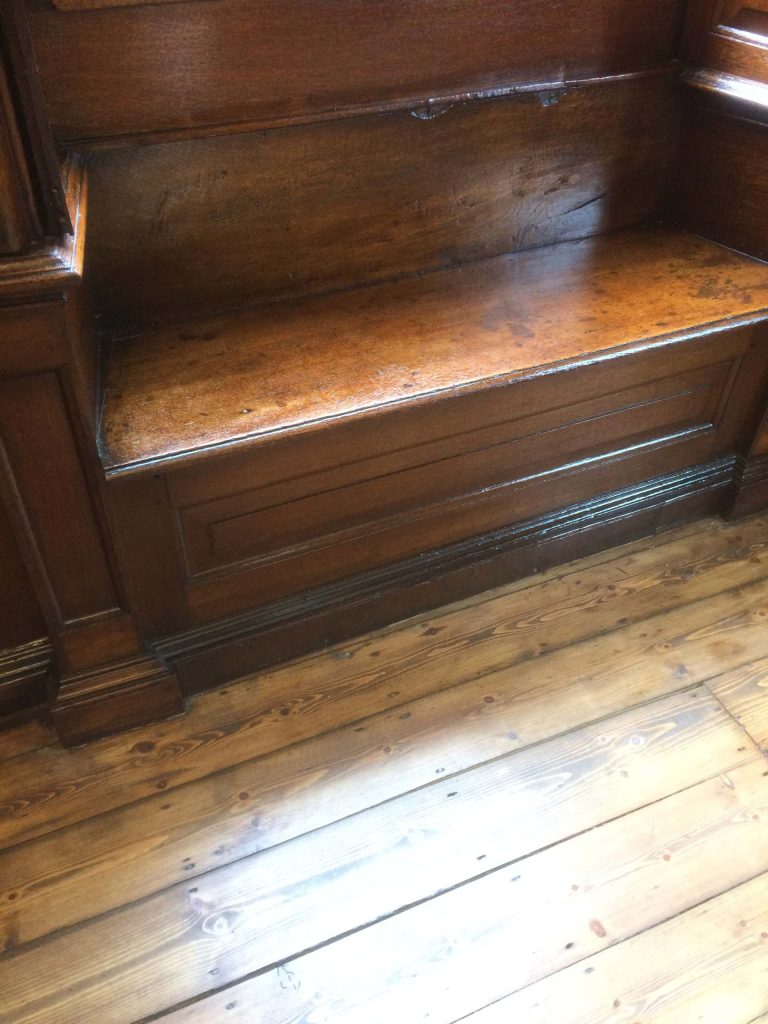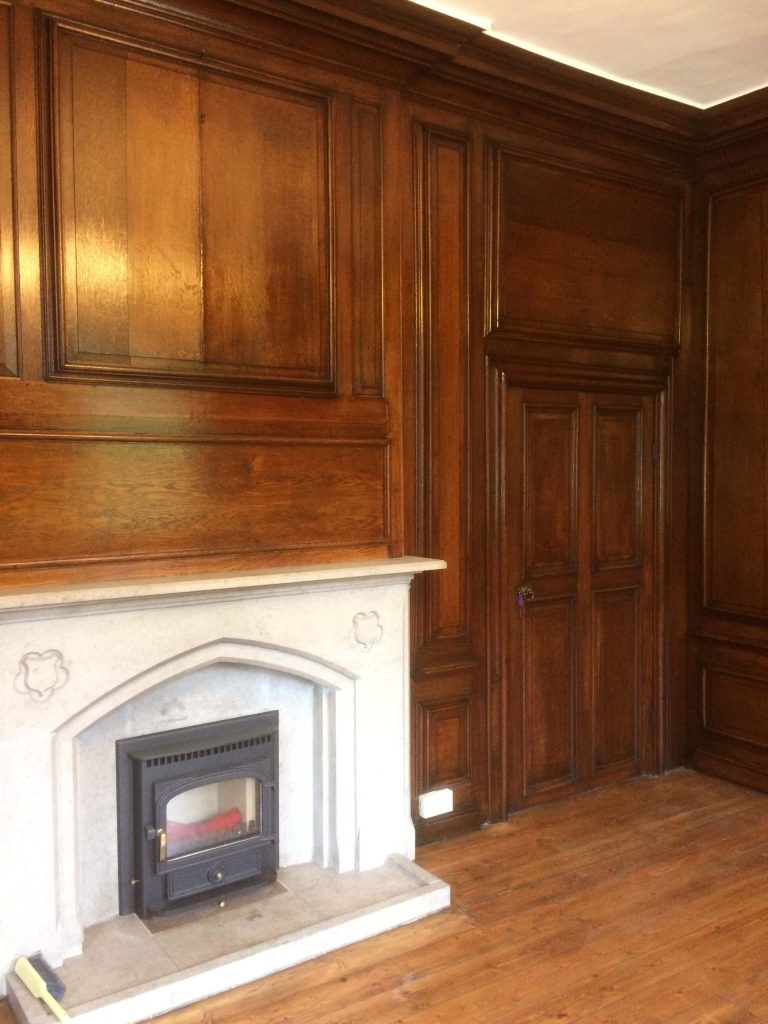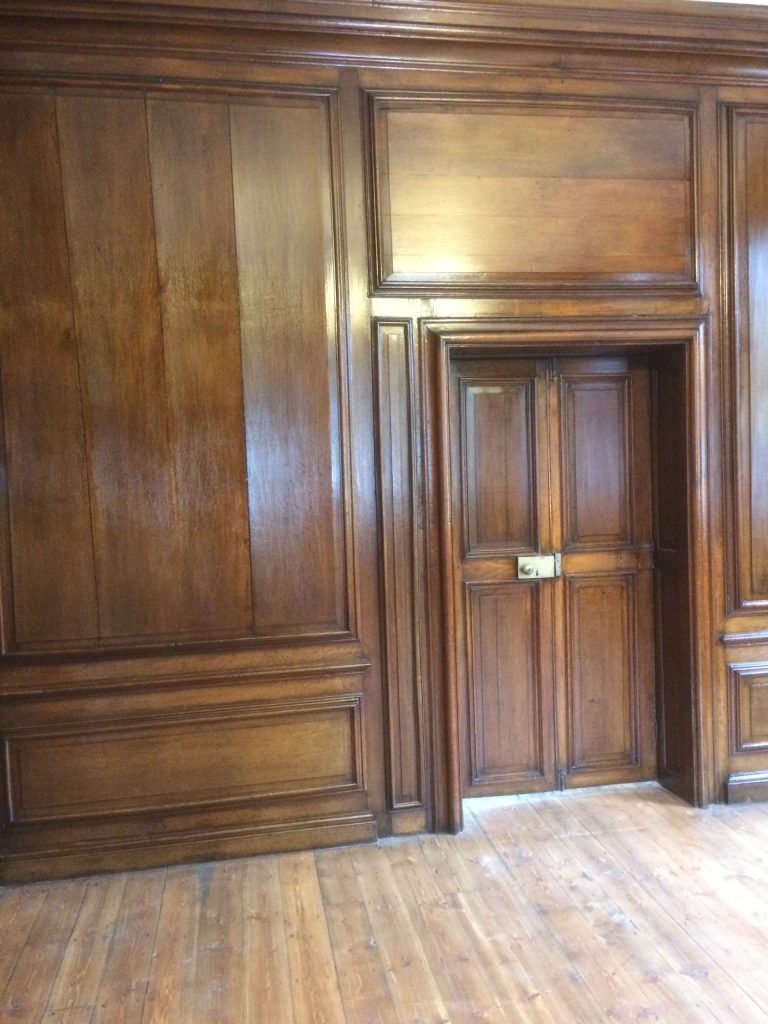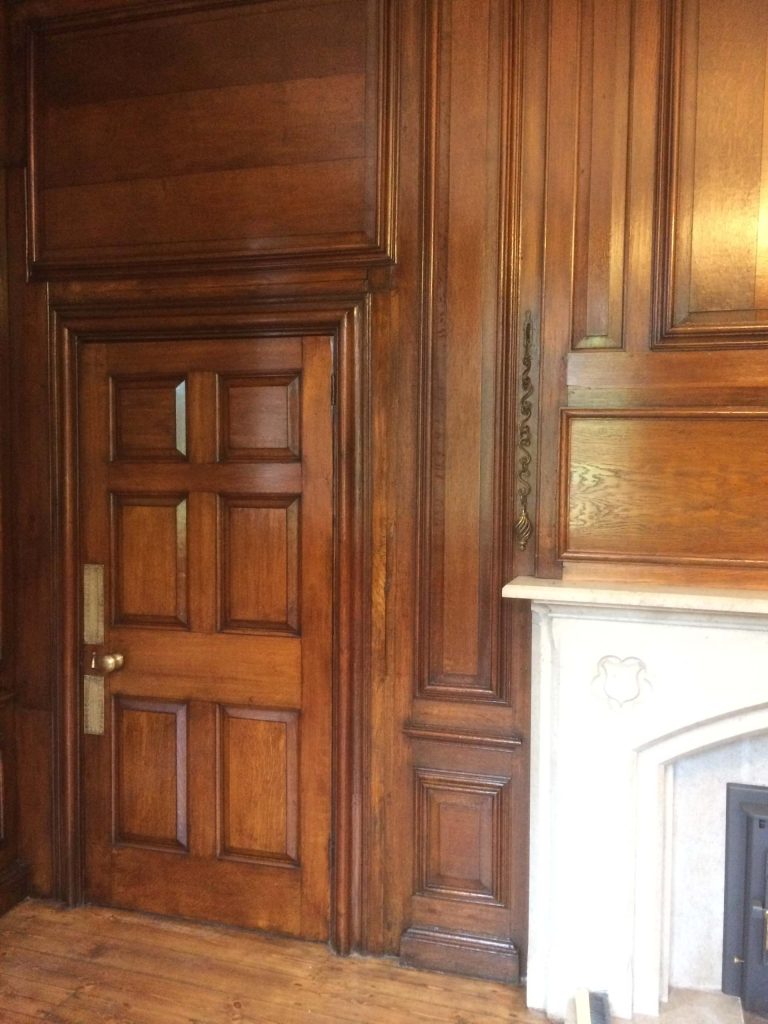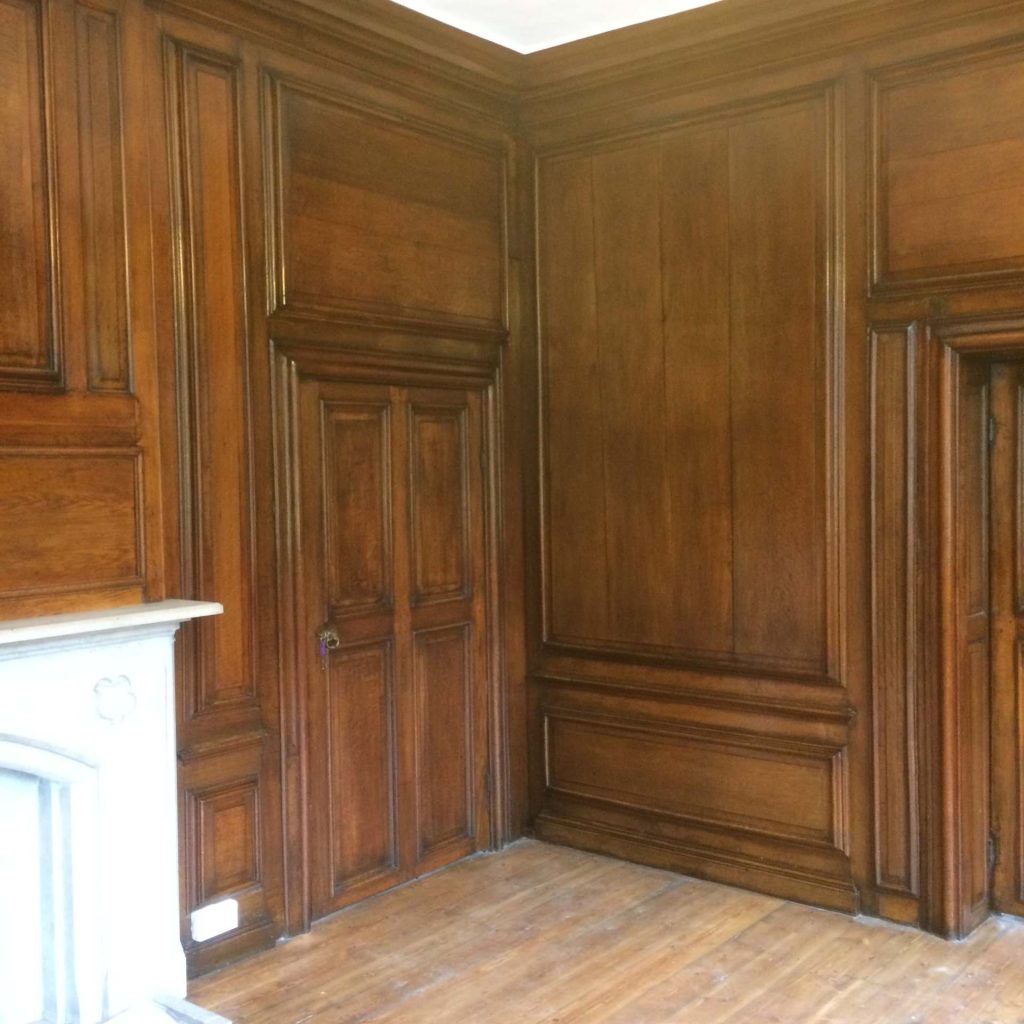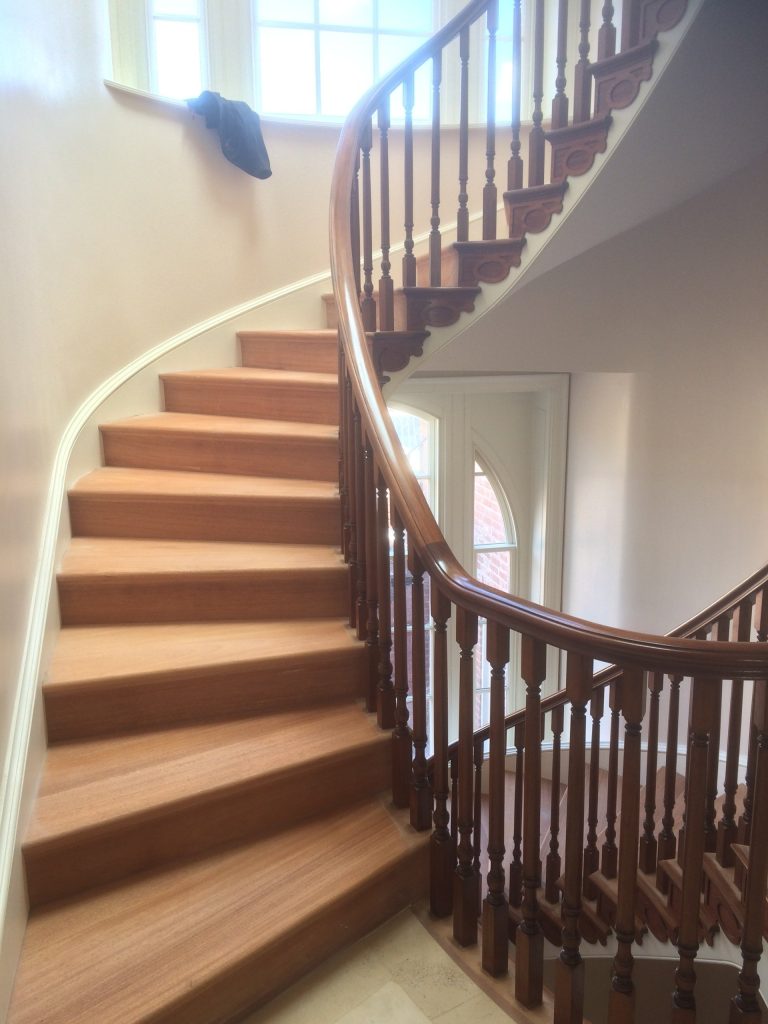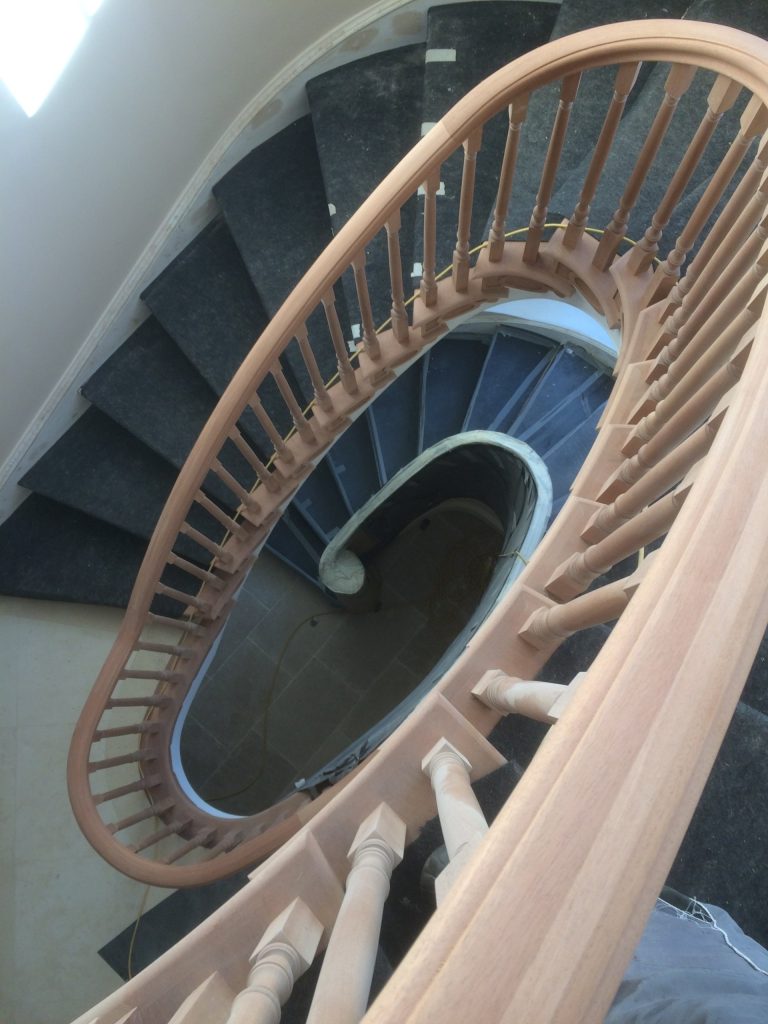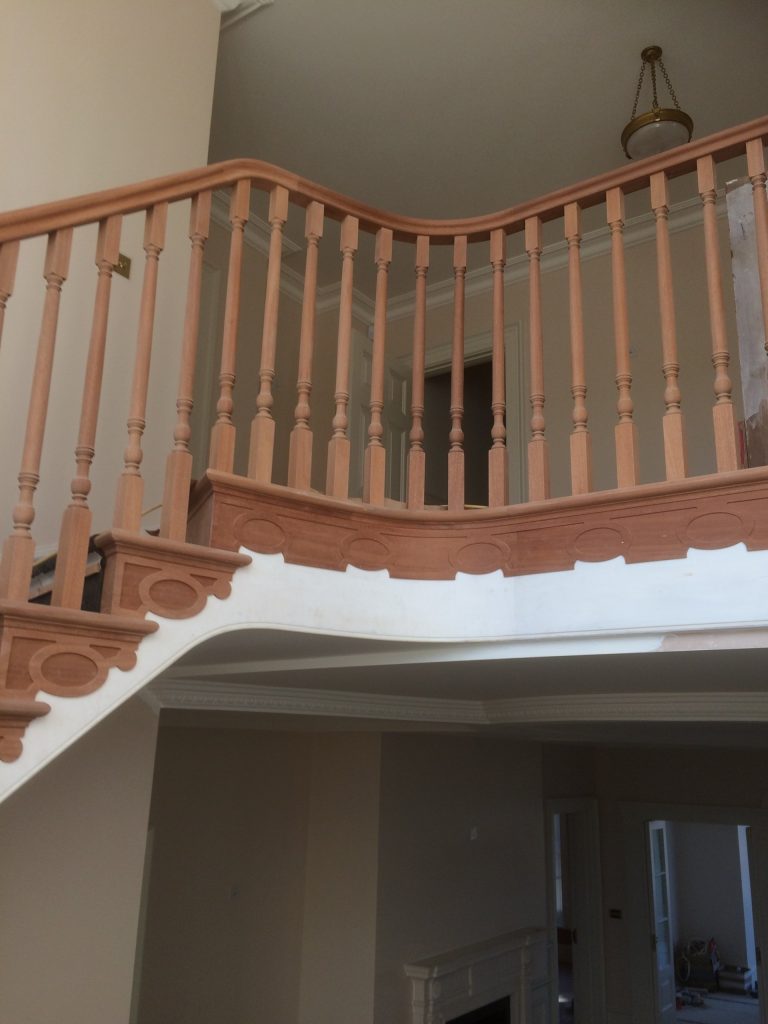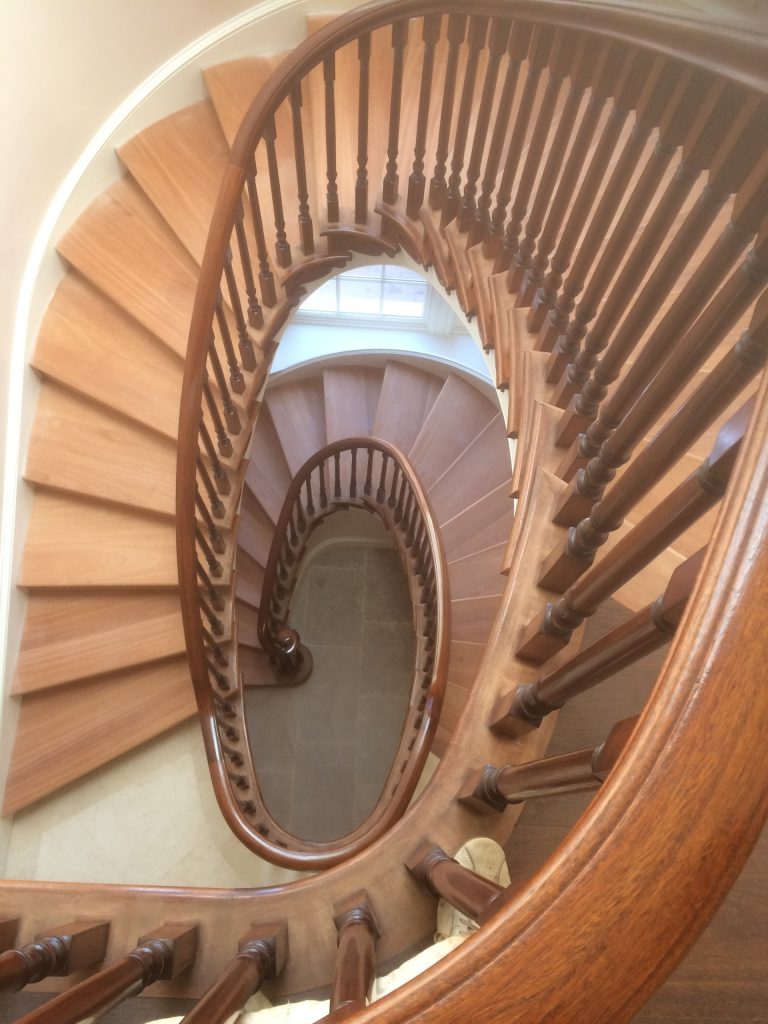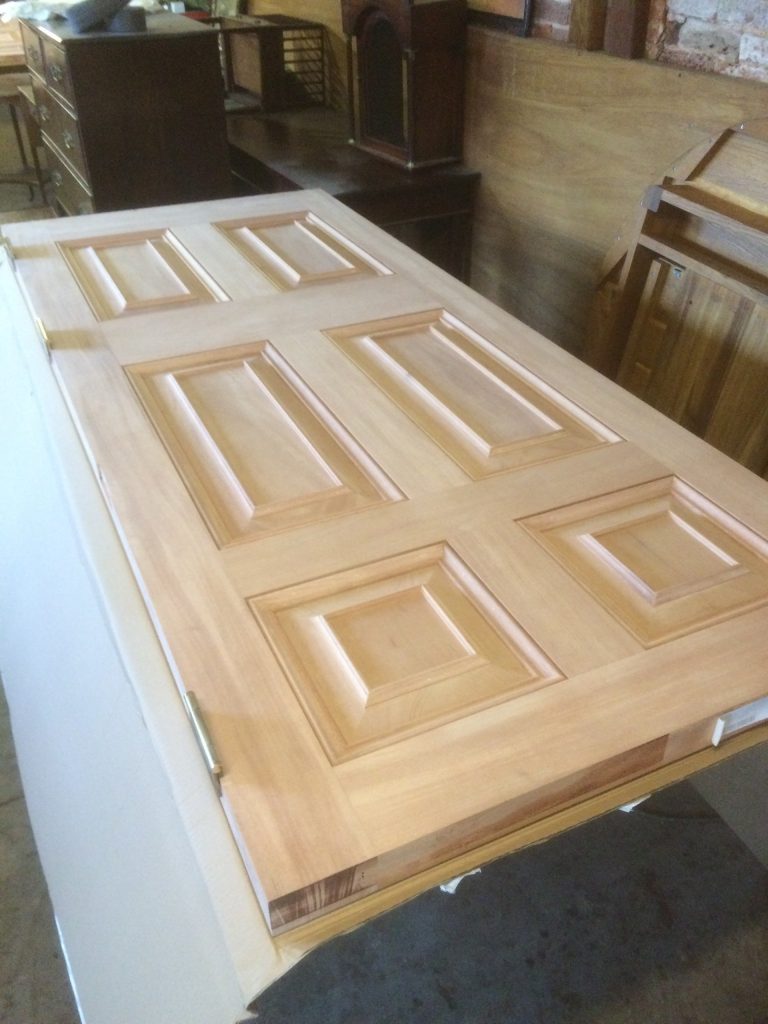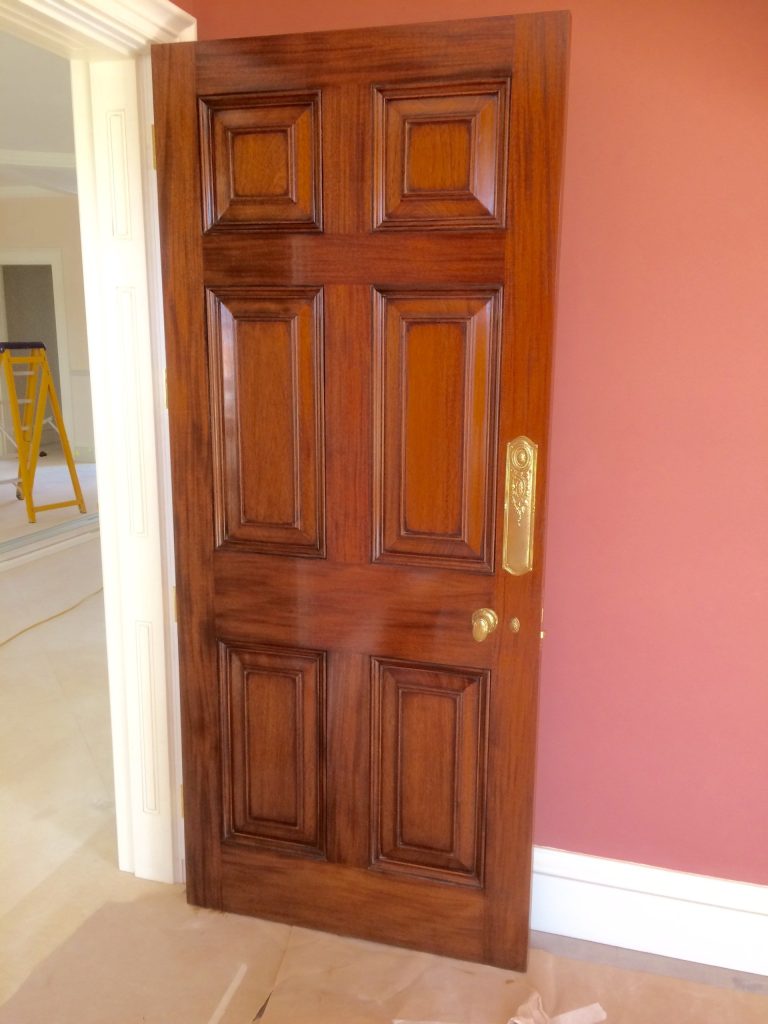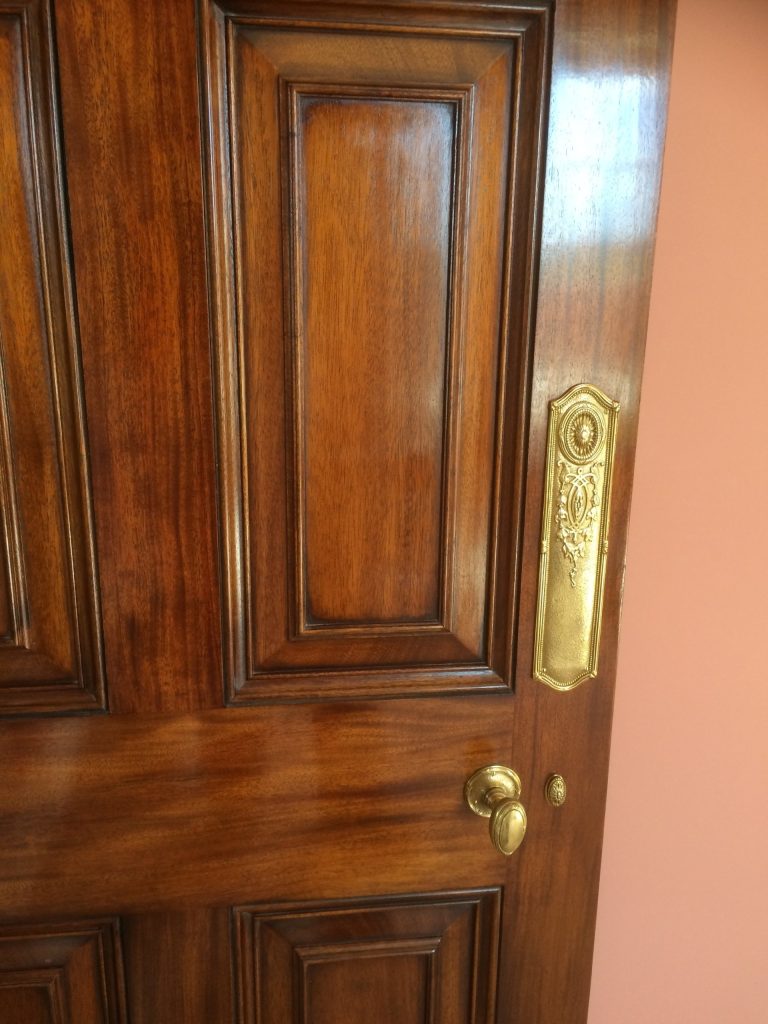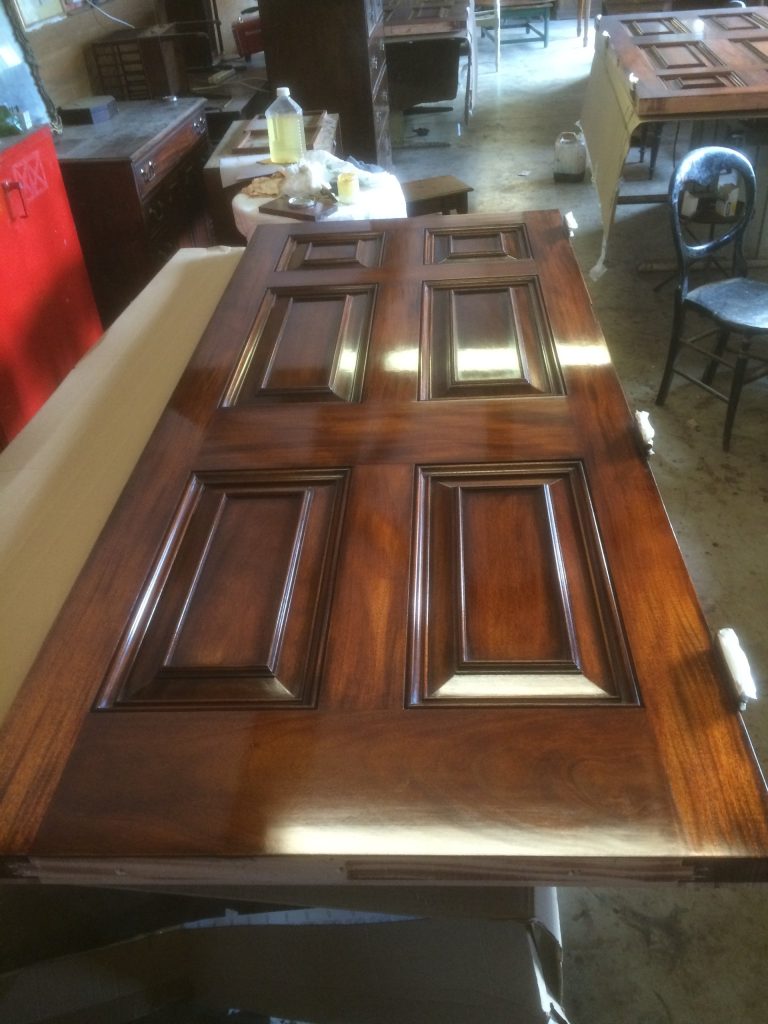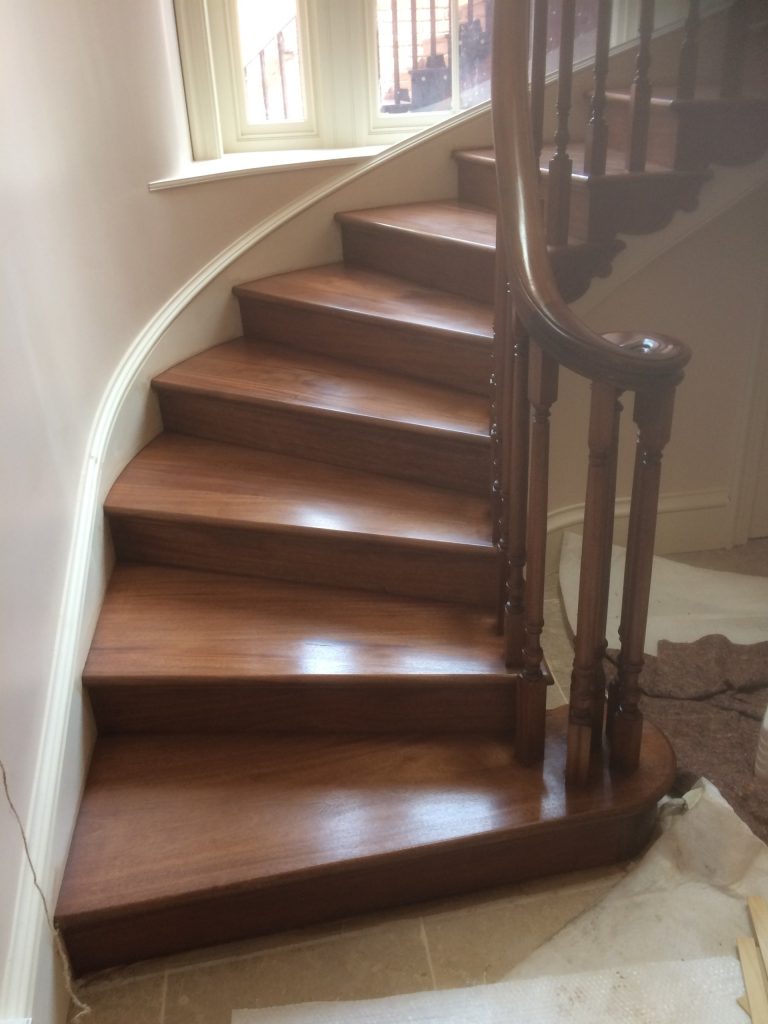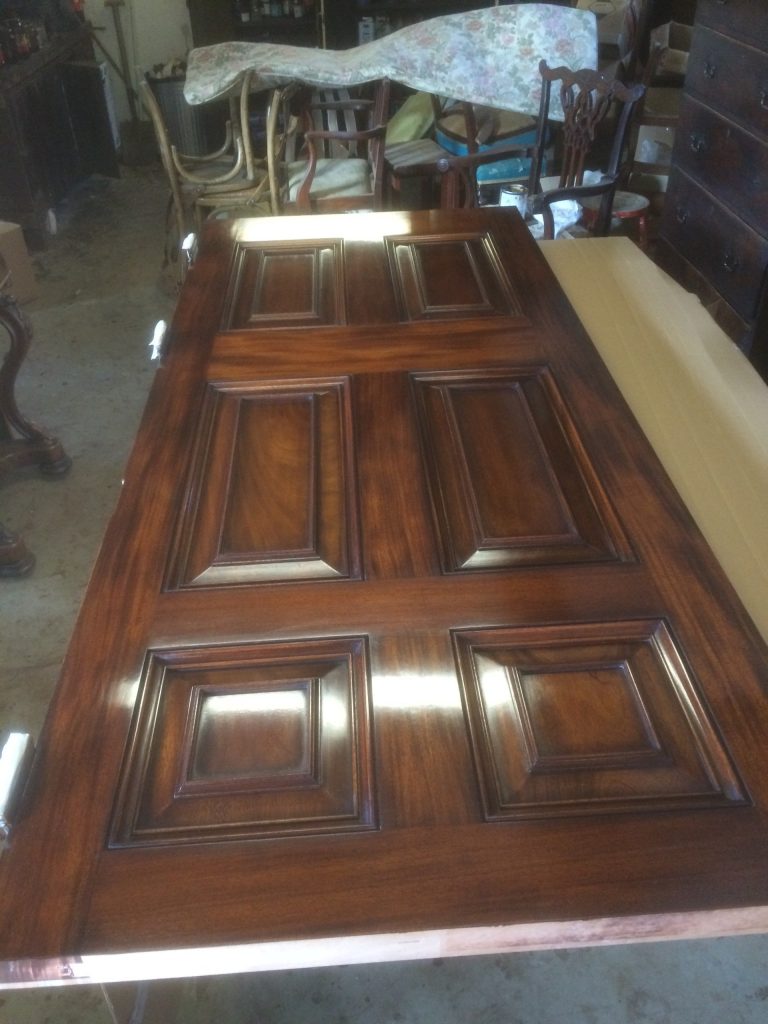Gallery

Regency Thomas Hope Library Table
This very unusual library table was brought to me in a very poor condition and although there was some missing components and quite a lot of damage to the veneers, the table was so unusual and rare that it warranted the cost of the extensive restoration required. Also the table and its design could be strongly associated with the well-known early 19th century furniture designer and architect Thomas Hope.
The hand cut veneer on the top was badly rippled and there were numerous sections missing. Matching salvaged period veneers were chosen from my store then cut and grafted into the damaged areas. Where the veneers were rippled hot water and steam were applied to regenerate the animal glue beneath. A hot iron was then applied to help flatten the veneers back down then weights and cramps used to secure the veneers until the glue hardened off again. Many other sections of veneers were also damaged around the whole table and also required the same technique.
One end of a drop leaf was missing and a matching piece of mahogany and veneer was sourced to use to make a new end. The whole table top had a deep cross banding in an exotic hard wood of which there were many missing sections going around the tops edge and of course where the new end had been grafted. A matching timber was found and cut into veneered cross banded sections to apply and graft.
The finish of the table was water damaged and very dirty and dry. The damaged finish was gently cleaned and the whole table revived where possible and refinished in the areas which were beyond revival. This was done using the same materials and methods that would have been used when the table was first constructed in the early 19th century.
The aim is always not to over restore a piece if necessary but when extensive work is required that it be done sympathetically and using the correct methods and materials.
Before
After
18th Century Chestnut Armoire
I bought his wonderful solid chestnut Armoire cupboard from auction, an attempt had been made to clean it by an amateur as you can see from the before pictures. Luckily they had not disturbed to much of the original finish and with a reviver and lots of waxing I managed to bring back its original deep sumptuous colour and patination.
Before
After
George II Walnut Bureau Cabinet
A fabulous early 18th century burr walnut bureau cabinet. I replaced many of the missing pieces of mouldings and veneers which were hand made to match the existing original materials and re-created using period walnut and walnut veneers. The mouldings were solid walnut shaped and formed on the end grain and secured to a pine backing so as to prevent curling. This is exactly how I constructed the replacement mouldings.
The original finish had deteriorated in many areas but I was able to save most of the original finish using a reviver made to a family recipe. Where I was not able to revive, a gum resin lacquer was mixed and applied to emulate its original method of finishing resulting in a deep mellow honey colour. The handles were not original and so were replaced with the correct style; these were specially forged from solid brass and aged.
During the restoration I found a secret compartment which the owner was not aware of. It was released using an ingenious hidden button and wooden spring mechanism. This revealed a box section made from oak with eight beautifully dovetailed small drawers with mercury gilded knobs and because they had remained hidden they still looked as good as they did when first made around three hundred years ago.
Before
After
New Build Hunting Lodge Railing/Staircase
A large Georgian style hunting lodge was designed and built from new on an old Derbyshire country estate. The hand rail was constructed from solid oak and the centrally positioned stair case spanned four floors. A more contemporary finish was requested to match the internal style and finish of the property. From the samples provided to the client a washed out natural oak finish was chosen. This was achieved using a combination of lime, white shellac polish and natural waxes.
CHATSWORTH HOUSE – DUKES STAIRCASE – 6 WEEK PROJECT
I was honoured to be approached to restore and re-polish the handrail of the “Dukes staircase” at Chatsworth stately home Derbyshire. The handrail had previously stained and re-polished to a deep red colour. I was asked if I could re-polish the handrail to match some of the period furniture of the house, which was a paler mellow colour. To achieve this and remove the dark red stain, the whole six floors of handrails had to be stripped, prepared, then bleached out using a special two part wood bleach. A very light walnut stain was mixed then washed out to achieve the desired colour. The handrail was then traditionally French polished to a soft full bodied finish.
GEORGIAN COUNTRY MANOR HOUSE – 18TH CENTURY OAK PANELLING – 4 WEEK PROJECT
The original oak panelling at this Ashbourne Georgian Hall was in need of restoration and conservation when the new owners took possession of the property. The original finish had perished, and a heavy Victorian dark varnish applied over the top making it opaque and brown. Also, a large section of wall panelling had warped and come loose from the wall. The warped section of panelling was removed, and the warp corrected using oak bearers fitted to the back. It was then refixed into its original position. The perished opaque finish was carefully removed using methylated spirits to preserve the original patina beneath. The panelling was then oiled and waxed using traditional methods and materials to a silky mellow honey colour.
Before
After
NEW BUILD MANOR HOUSE – 6 WEEK PROJECT
This new build Gentleman’s residence in Nottinghamshire was built in a Georgian style. The entire central staircase, including the treads and risers spanning all four floors and all internal doors were constructed from solid mahogany in the Georgian manner. A deep rich colour and finish was required to emulate a period finish. After the new wood was correctly prepared it was a stained using Vandyke crystal water stain to achieve the desired colour. The staircase, treads, risers, spindles, handrail and all internal doors were then traditionally French polished by hand to a deep rich luster.

